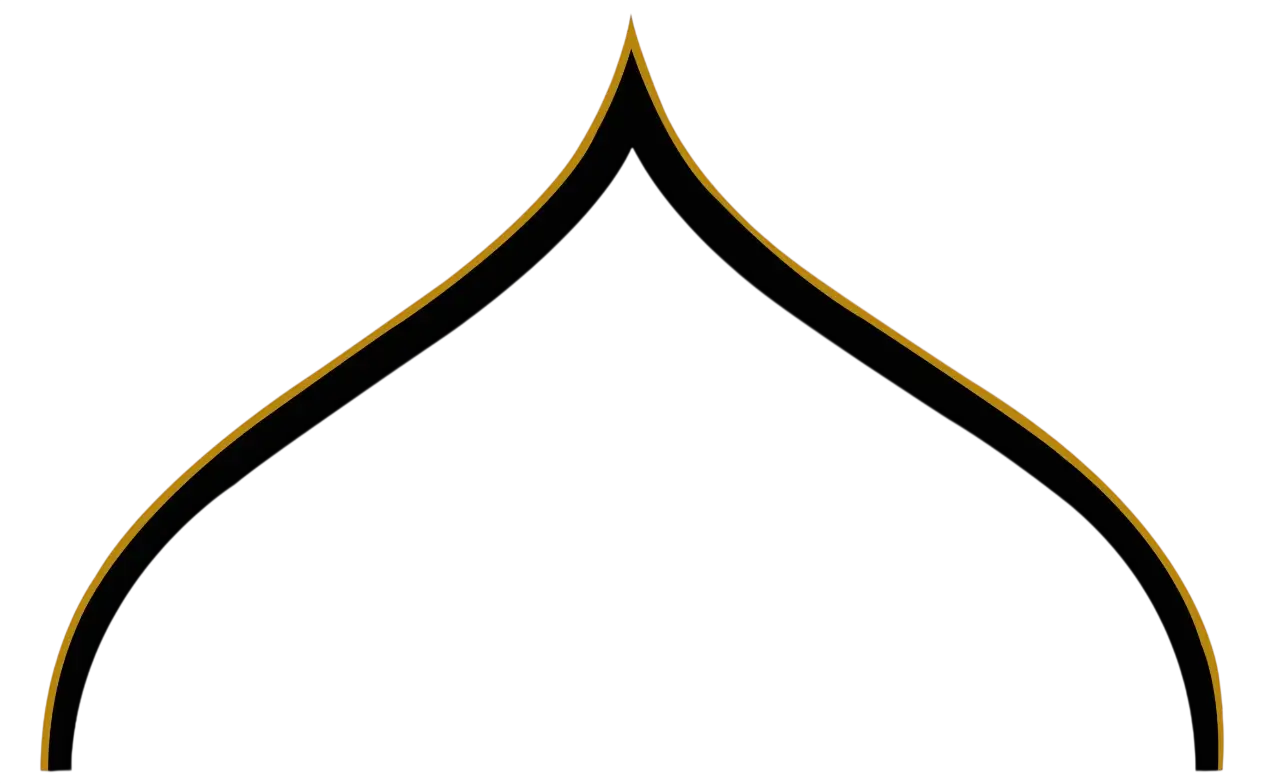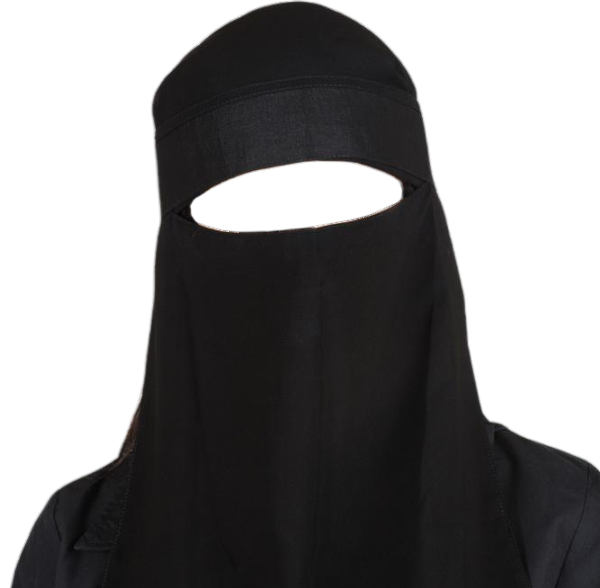
Is Niqab obligatory?
There is considerable debate over whether the Niqab is obligatory in Islam. Conflicting opinions are presented with arguments, but which opinion is correct?
When we examine the context and reasons for the revelation of the Niqab's obligation, we see that it was related to safety concerns, to prevent women from being harassed by undesirable men and mistakenly regarded as slaves.
Thus, according to the correct opinion, the Niqab is not obligatory because the face is not considered part of the 'awrah. This article provides a detailed explanation of why the Niqab is not obligatory and what the original reason behind the Niqab regulation was.
Why the Revelation About the Niqab Was Sent Down
Initially, women wore a khimar and exposed their faces and hands. This eventually changed, but why exactly? What was the reason that women suddenly had to cover their faces?
The reason was that free believing women were being harassed by men with ill intentions, who troubled women when they were out in public.
These men did so because they thought the women they saw outside might be slaves. Evil men were known to harass female slaves, so they could not make a real distinction between a slave and a free woman. Allah thus commanded that they should distinguish themselves for their safety.
 O Prophet, tell your wives, your daughters, and the women of the believers to draw their cloaks [jilbab] over themselves. That is more appropriate, that they may be recognized and not harassed.
O Prophet, tell your wives, your daughters, and the women of the believers to draw their cloaks [jilbab] over themselves. That is more appropriate, that they may be recognized and not harassed.
[Surah al-Ahzab, verse 59]
 حدثنا أبو جعفر الرازي وهشيم عن حصين عن أبي مالك قال كان نساء نبي الله صلى الله عليه وسلم يخرجن بالليل لحاجتهن وكان ناس من المنافقين يتعرضون لهن فيؤذين فشكوا ذلك فقيل ذلك للمنافقين فقالوا إنما نفعله بالإماء فنزلت هذه الآية يا أيها النبي قل لأزواجك وبناتك ونساء المؤمنين يدنين عليهن من جلابيبهن ذلك أدنى أن يعرفن فلا يؤذين
حدثنا أبو جعفر الرازي وهشيم عن حصين عن أبي مالك قال كان نساء نبي الله صلى الله عليه وسلم يخرجن بالليل لحاجتهن وكان ناس من المنافقين يتعرضون لهن فيؤذين فشكوا ذلك فقيل ذلك للمنافقين فقالوا إنما نفعله بالإماء فنزلت هذه الآية يا أيها النبي قل لأزواجك وبناتك ونساء المؤمنين يدنين عليهن من جلابيبهن ذلك أدنى أن يعرفن فلا يؤذين
[الطبقات الكبرى - محمد بن سعد - ج ٨ - الصفحة ١٧٦]
Abu Malik reported:
"The wives of the Prophet (ﷺ) used to go out at night for their needs, and some of the hypocrites (munafiqun) harassed them and caused them harm. This was reported to the hypocrites, but they said: 'We only do this with the slaves.'
Then the following verse was revealed: 'O Prophet, tell your wives, your daughters, and the women of the believers to draw their cloaks [jilbab] over themselves. That is more appropriate, that they may be recognized and not harassed.'"
[Tabaqat al-Kubraa 8/176]
 17788 - عَنِ السُّدِّىِّ رَضِيَ اللهُ، عَنْهُ فِي الْآيَةِ قَالَ: كَانَ أُنَاسٌ مِنْ فُسَّاقِ أَهْلِ الْمَدِينَةِ بِاللَّيْلِ حِينَ يَخْتَلِطُ الظَّلامُ، يَأْتُونَ إِلَى طُرُقِ الْمَدِينَةِ فَيَتَعَرَّضُونَ لِلنِّسَاءِ، وَكَانَتْ مَسَاكِنُ أَهْلِ الْمَدِينَةِ ضَيِّقَةً فَإِذَا كَانَ اللَّيْلُ خَرَجَ النِّسَاءُ إِلَى الطُّرُقِ، فَيَقْضِينَ حَاجَتَهُنَّ، فَكَانَ أُولَئِكَ الْفُسَّاقُ يَتْبَعُونَ ذَلِكَ مِنْهُنَّ، فَإِذَا رَأَوُا امْرَأَةً عَلَيْهَا جِلْبَابٌ قَالُوا: هَذِهِ حُرَّةٌ فَكُفُّوا، عَنْهَا، وَإِذَا رَأَوُا الْمَرْأَةَ لَيْسَ عَلَيْهَا جِلْبَابٌ قَالُوا: هَذِهِ أَمَةٌ فَوَثَبُوا عَلَيْهَا [1] .
17788 - عَنِ السُّدِّىِّ رَضِيَ اللهُ، عَنْهُ فِي الْآيَةِ قَالَ: كَانَ أُنَاسٌ مِنْ فُسَّاقِ أَهْلِ الْمَدِينَةِ بِاللَّيْلِ حِينَ يَخْتَلِطُ الظَّلامُ، يَأْتُونَ إِلَى طُرُقِ الْمَدِينَةِ فَيَتَعَرَّضُونَ لِلنِّسَاءِ، وَكَانَتْ مَسَاكِنُ أَهْلِ الْمَدِينَةِ ضَيِّقَةً فَإِذَا كَانَ اللَّيْلُ خَرَجَ النِّسَاءُ إِلَى الطُّرُقِ، فَيَقْضِينَ حَاجَتَهُنَّ، فَكَانَ أُولَئِكَ الْفُسَّاقُ يَتْبَعُونَ ذَلِكَ مِنْهُنَّ، فَإِذَا رَأَوُا امْرَأَةً عَلَيْهَا جِلْبَابٌ قَالُوا: هَذِهِ حُرَّةٌ فَكُفُّوا، عَنْهَا، وَإِذَا رَأَوُا الْمَرْأَةَ لَيْسَ عَلَيْهَا جِلْبَابٌ قَالُوا: هَذِهِ أَمَةٌ فَوَثَبُوا عَلَيْهَا [1] .
[تفسير ابن أبي حاتم - ابن أبي حاتم الرازي - ج ١٠ - الصفحة ٣١٥٥]
Al-Suddi reported:
"There were some dissolute men in Medina who, when darkness fell, would go to the streets of the city and harass women. The houses of the people of Medina were narrow, so when night fell, women would go out into the streets to relieve themselves. These dissolute men would follow them. If they saw a woman wearing a jilbab (cloak), they would say, 'This is a free woman, leave her alone.' But if they saw a woman not wearing a jilbab, they would say, 'This is a slave,' and they would harass her."
[Tafsir Ibn Abi Haatim 10/3155]
The verse in Surah al-Ahzab thus refers to a specific situation, for which the obligation of the niqab was originally sent down.
It was an obligation for them during that period to distinguish themselves from female slaves who were harassed by hypocrites and people with ill intentions.
So what were the women commanded to cover after the revelation of Surah al-Ahzab verse 59? Ibn 'Abbas and others mentioned that what needed to be covered was the face, with only one eye or both eyes allowed to be visible.
 حدثني عليّ، قال: ثنا أَبو صالح قال ثني معاوية عن علي عن ابن عباس، قوله (يَاأَيُّهَا النَّبِيُّ قُلْ لأزْوَاجِكَ وَبَنَاتِكَ وَنِسَاءِ الْمُؤْمِنِينَ يُدْنِينَ عَلَيْهِنَّ مِنْ جَلابِيبِهِنَّ) أمر الله نساء المؤمنين إذا خرجن من بيوتهن في حاجة أن يغطين وجوههن من فوق رءوسهن بالجلابيب ويبدين عينا واحدة.
حدثني عليّ، قال: ثنا أَبو صالح قال ثني معاوية عن علي عن ابن عباس، قوله (يَاأَيُّهَا النَّبِيُّ قُلْ لأزْوَاجِكَ وَبَنَاتِكَ وَنِسَاءِ الْمُؤْمِنِينَ يُدْنِينَ عَلَيْهِنَّ مِنْ جَلابِيبِهِنَّ) أمر الله نساء المؤمنين إذا خرجن من بيوتهن في حاجة أن يغطين وجوههن من فوق رءوسهن بالجلابيب ويبدين عينا واحدة.
[ج: 2 ص: 324 - كتاب تفسير الطبري جامع البيان]
Ibn Abbas explained about the verse: 'O Prophet, tell your wives, your daughters, and the women of the believers to draw their jilbabs over themselves,' that Allah commanded the believing women to cover their faces with the jilbab that hangs over their heads when they leave their homes for their needs, with only one eye remaining visible.
[Tafsir al-Tabari, page 20/324]
 حدثني يعقوب قال ثنا ابن علية عن ابن عون عن محمد عن عبيدة في قوله (يَاأَيُّهَا النَّبِيُّ قُلْ لأزْوَاجِكَ وَبَنَاتِكَ وَنِسَاءِ الْمُؤْمِنِينَ يُدْنِينَ عَلَيْهِنَّ مِنْ جَلابِيبِهِنَّ) فلبسها عندنا ابن عون قال: ولبسها عندنا محمد قال محمد: ولبسها عندي عبيدة قال ابن عون بردائه فتقنع به، فغطى أنفه وعينه اليسرى وأخرج عينه اليمنى، وأدنى رداءه من فوق حتى جعله قريبا من حاجبه أو على الحاجب.
حدثني يعقوب قال ثنا ابن علية عن ابن عون عن محمد عن عبيدة في قوله (يَاأَيُّهَا النَّبِيُّ قُلْ لأزْوَاجِكَ وَبَنَاتِكَ وَنِسَاءِ الْمُؤْمِنِينَ يُدْنِينَ عَلَيْهِنَّ مِنْ جَلابِيبِهِنَّ) فلبسها عندنا ابن عون قال: ولبسها عندنا محمد قال محمد: ولبسها عندي عبيدة قال ابن عون بردائه فتقنع به، فغطى أنفه وعينه اليسرى وأخرج عينه اليمنى، وأدنى رداءه من فوق حتى جعله قريبا من حاجبه أو على الحاجب.
[ج: 2 ص: 325 - كتاب تفسير الطبري جامع البيان]
Yahya reported from Ibn Aliea, from Ibn Awn, from Muhammad ibn Sireen that he heard 'Ubaidah explain the verse: 'O Prophet, tell your wives, your daughters, and the women of the believers to draw their jilbabs over themselves.'
Ibn Awn demonstrated the jilbab to us, and Muhammad ibn Sireen demonstrated it to Ibn Awn.
Muhammad ibn Sireen said that 'Ubaidah (a Companion) wore the jilbab by wrapping it around his head, covering his nose and left eye, and leaving only his right eye visible. He adjusted his clothing as close to his eyebrow or directly on his eyebrow as possible."
[Tafsir Tabari 20/325]
The interpretation of Ibn 'Abbas and 'Ubaydah bin Abu Sufyan bin al-Harith indicates that believing women were required to cover their faces, leaving only one eye uncovered.
There is also a second opinion regarding this verse, which states that both eyes may be visible. This view is mentioned by Ibn 'Abbas and Qatada.
 حدثني محمد بن سعد قال ثني أَبي قال ثني عمي قال: ثني أَبي عن أبيه عن ابن عباس، قوله (يَاأَيُّهَا النَّبِيُّ قُلْ لأزْوَاجِكَ وَبَنَاتِكَ وَنِسَاءِ الْمُؤْمِنِينَ يُدْنِينَ عَلَيْهِنَّ مِنْ جَلابِيبِهِنَّ ... ) إلى قوله (وَكَانَ اللَّهُ غَفُورًا رَحِيمًا) قال: كانت الحرة تلبس لباس الأمة فأمر الله نساء المؤمنين أن يدنين عليهن من جلابيبهن. وإدناء الجلباب: أن تقنع وتشد على جبينها.
حدثني محمد بن سعد قال ثني أَبي قال ثني عمي قال: ثني أَبي عن أبيه عن ابن عباس، قوله (يَاأَيُّهَا النَّبِيُّ قُلْ لأزْوَاجِكَ وَبَنَاتِكَ وَنِسَاءِ الْمُؤْمِنِينَ يُدْنِينَ عَلَيْهِنَّ مِنْ جَلابِيبِهِنَّ ... ) إلى قوله (وَكَانَ اللَّهُ غَفُورًا رَحِيمًا) قال: كانت الحرة تلبس لباس الأمة فأمر الله نساء المؤمنين أن يدنين عليهن من جلابيبهن. وإدناء الجلباب: أن تقنع وتشد على جبينها.
[ج: 2 ص: 325 - كتاب تفسير الطبري جامع البيان]
Regarding the statement (O Prophet, tell your wives, your daughters, and the women of the believers to draw their jilbabs over themselves...) up to (And Allah is Forgiving, Merciful):
Ibn Abbas said: 'Previously, a free woman would wear the clothing of a slave. Allah commanded the believing women to draw their jilbabs over themselves. Covering with the jilbab means that they wear it in such a way that it covers their face and is secured to their forehead.'
[Tafsir Tabari 20/325]
 حدثنا بشر قال ثنا يزيد قال ثنا سعيد عن قتادة قوله (يَاأَيُّهَا النَّبِيُّ قُلْ لأزْوَاجِكَ وَبَنَاتِكَ وَنِسَاءِ الْمُؤْمِنِينَ) أخذ الله عليهن إذا خرجن أن يقنعن على الحواجب (ذَلِكَ أَدْنَى أَنْ يُعْرَفْنَ فَلا يُؤْذَينَ) وقد كانت المملوكة إذا مرت تناولوها بالإيذاء، فنهى الله الحرائر أن يتشبهن بالإماء.
حدثنا بشر قال ثنا يزيد قال ثنا سعيد عن قتادة قوله (يَاأَيُّهَا النَّبِيُّ قُلْ لأزْوَاجِكَ وَبَنَاتِكَ وَنِسَاءِ الْمُؤْمِنِينَ) أخذ الله عليهن إذا خرجن أن يقنعن على الحواجب (ذَلِكَ أَدْنَى أَنْ يُعْرَفْنَ فَلا يُؤْذَينَ) وقد كانت المملوكة إذا مرت تناولوها بالإيذاء، فنهى الله الحرائر أن يتشبهن بالإماء.
[ج: 2 ص: 325 - كتاب تفسير الطبري جامع البيان]
Qatada on the verse: 'O Prophet, tell your wives, your daughters, and the women of the believers...'
Allah commanded them that, when they go outside, they should cover their faces up to their eyebrows. {This is better, so that they will be recognized as free women and not be harassed.}
Previously, slave women were harassed when they passed by, so Allah prohibited free women from dressing like slaves.
[Tafsir Tabari 20/325]
Qatada indicates that the interpretation of the verse is that women should cover their faces with the exception of their eyes.
Qatada also clarifies that verse 59 of Surah al-Ahzaab was revealed for a specific reason, not necessarily because the face is 'awrah (as some claim).
Why the Niqab is Not Obligatory
As we have made clear, the original reason for the Niqab was to protect believing women by having them dress differently from slaves. It was a way to deter hypocrites and evil men so that the believers would not be harassed.
The revelation of the Niqab was therefore for reasons of safety, not because the woman's face is considered 'awrah.
Verse 31 of Surah al-Nur makes it clear that the face is not 'awrah. Ibn 'Abbas, 'Aisha, and various others among the Sahaba and Tabi'een indicate that the face and hands are not considered 'awrah.
This view is also supported by Fuqaha such as Imam Malik and Imam Shafi'i, who hold that the face and hands are not 'awrah.
They base this view on the verse from Surah al-Nur, where Sahaba and Tabi'een clearly stated that the face and hands are not considered 'awrah.
 وَقُل لِّلۡمُؤۡمِنَٰتِ يَغۡضُضۡنَ مِنۡ أَبۡصَٰرِهِنَّ وَيَحۡفَظۡنَ فُرُوجَهُنَّ وَلَا يُبۡدِينَ زِينَتَهُنَّ إِلَّا مَا ظَهَرَ مِنۡهَاۖ وَلۡيَضۡرِبۡنَ بِخُمُرِهِنَّ عَلَىٰ جُيُوبِهِنَّۖ وَلَا يُبۡدِينَ زِينَتَهُنَّ إِلَّا لِبُعُولَتِهِنَّ أَوۡ ءَابَآئِهِنَّ أَوۡ ءَابَآءِ بُعُولَتِهِنَّ أَوۡ أَبۡنَآئِهِنَّ أَوۡ أَبۡنَآءِ بُعُولَتِهِنَّ أَوۡ إِخۡوَٰنِهِنَّ أَوۡ بَنِيٓ إِخۡوَٰنِهِنَّ أَوۡ بَنِيٓ أَخَوَٰتِهِنَّ أَوۡ نِسَآئِهِنَّ أَوۡ مَا مَلَكَتۡ أَيۡمَٰنُهُنَّ أَوِ ٱلتَّٰبِعِينَ غَيۡرِ أُوْلِي ٱلۡإِرۡبَةِ مِنَ ٱلرِّجَالِ أَوِ ٱلطِّفۡلِ ٱلَّذِينَ لَمۡ يَظۡهَرُواْ عَلَىٰ عَوۡرَٰتِ ٱلنِّسَآءِۖ وَلَا يَضۡرِبۡنَ بِأَرۡجُلِهِنَّ لِيُعۡلَمَ مَا يُخۡفِينَ مِن زِينَتِهِنَّۚ وَتُوبُوٓاْ إِلَى ٱللَّهِ جَمِيعًا أَيُّهَ ٱلۡمُؤۡمِنُونَ لَعَلَّكُمۡ تُفۡلِحُونَ
وَقُل لِّلۡمُؤۡمِنَٰتِ يَغۡضُضۡنَ مِنۡ أَبۡصَٰرِهِنَّ وَيَحۡفَظۡنَ فُرُوجَهُنَّ وَلَا يُبۡدِينَ زِينَتَهُنَّ إِلَّا مَا ظَهَرَ مِنۡهَاۖ وَلۡيَضۡرِبۡنَ بِخُمُرِهِنَّ عَلَىٰ جُيُوبِهِنَّۖ وَلَا يُبۡدِينَ زِينَتَهُنَّ إِلَّا لِبُعُولَتِهِنَّ أَوۡ ءَابَآئِهِنَّ أَوۡ ءَابَآءِ بُعُولَتِهِنَّ أَوۡ أَبۡنَآئِهِنَّ أَوۡ أَبۡنَآءِ بُعُولَتِهِنَّ أَوۡ إِخۡوَٰنِهِنَّ أَوۡ بَنِيٓ إِخۡوَٰنِهِنَّ أَوۡ بَنِيٓ أَخَوَٰتِهِنَّ أَوۡ نِسَآئِهِنَّ أَوۡ مَا مَلَكَتۡ أَيۡمَٰنُهُنَّ أَوِ ٱلتَّٰبِعِينَ غَيۡرِ أُوْلِي ٱلۡإِرۡبَةِ مِنَ ٱلرِّجَالِ أَوِ ٱلطِّفۡلِ ٱلَّذِينَ لَمۡ يَظۡهَرُواْ عَلَىٰ عَوۡرَٰتِ ٱلنِّسَآءِۖ وَلَا يَضۡرِبۡنَ بِأَرۡجُلِهِنَّ لِيُعۡلَمَ مَا يُخۡفِينَ مِن زِينَتِهِنَّۚ وَتُوبُوٓاْ إِلَى ٱللَّهِ جَمِيعًا أَيُّهَ ٱلۡمُؤۡمِنُونَ لَعَلَّكُمۡ تُفۡلِحُونَ
And tell the believing women to lower their gazes and guard their chastity and not to reveal their adornment except that which is apparent of it.
And they should draw their khumur (head coverings) over their bosoms
and not reveal their adornment except to their husbands, their fathers, their husbands' fathers, their sons, their husbands' sons, their brothers, the sons of their brothers or the sons of their sisters, or their (Muslim) women, or their (female) slaves whom their right hands possess, or elderly male servants who lack desire, or children who are not yet aware of the nakedness of women.
And let them not strike their feet to make known what they conceal of their adornment.
And turn to Allah in repentance, all of you, O believers, that you might succeed.
(Surah al-Nur verse 31)
Let's examine the interpretation of this verse. The phrase "and not to reveal their adornment except that which is apparent of it" is used to conclude that the face and hands are not considered 'awrah.
 ... and not to reveal their adornment except that which is apparent of it.
... and not to reveal their adornment except that which is apparent of it.
(Surah al-Nur, verse 31)
 حدثنا حفص عن عبد الله بن مسلم عن سعيد بن جبير عن ابن عباس: * (ولا يبدين زينتهن إلا ما ظهر منها) * قال: وجهها وكفها.
حدثنا حفص عن عبد الله بن مسلم عن سعيد بن جبير عن ابن عباس: * (ولا يبدين زينتهن إلا ما ظهر منها) * قال: وجهها وكفها.
[المصنف - ابن أبي شيبة الكوفي - ج ٣ - الصفحة ٣٨٤]
Ibn 'Abbas said: "{and not to reveal their adornment except that which is apparent of it}, her face and her hands."
[Musannaf Ibn Abi Shaybah - Volume 3 - Page 384]
 حدثني علي ، قال : ثنا عبد الله ، قال : ثني معاوية ، عن علي ، عن ابن عباس ، قوله : ( ولا يبدين زينتهن إلا ما ظهر منها ) قال : والزينة الظاهرة : الوجه ، وكحل العين ، وخضاب الكف ، والخاتم ، فهذه تظهر في بيتها لمن دخل من الناس عليها .
حدثني علي ، قال : ثنا عبد الله ، قال : ثني معاوية ، عن علي ، عن ابن عباس ، قوله : ( ولا يبدين زينتهن إلا ما ظهر منها ) قال : والزينة الظاهرة : الوجه ، وكحل العين ، وخضاب الكف ، والخاتم ، فهذه تظهر في بيتها لمن دخل من الناس عليها .
[تفسير الطبري صفحة 156 جزء 19]
Ibn Abbas said: "{and not to reveal their adornment except that which is apparent of it}, the visible adornments are: the face, Kohl of the eyes, henna for the hands, and the ring. These may be visible to her if someone enters her house."
[Tafsir Tabari - Volume 19 - Page 156]
 حدثنا شبابة بن سوار قال نا هشام بن الغاز قال نا نافع قال ابن عمر: الزينة الظاهرة: الوجه والكفان.
حدثنا شبابة بن سوار قال نا هشام بن الغاز قال نا نافع قال ابن عمر: الزينة الظاهرة: الوجه والكفان.
[المصنف - ابن أبي شيبة الكوفي - ج ٣ - الصفحة ٣٨٤]
Ibn 'Umar said: "The visible adornments are the face and the hands."
[Musannaf Ibn Abi Shaybah - Volume 3 - Page 384]
 حدثنا شبابة بن سوار قال نا هشام بن الغاز قال سمعت عطاء يقول: الزينة الظاهرة: الخضاب والكحل.
حدثنا شبابة بن سوار قال نا هشام بن الغاز قال سمعت عطاء يقول: الزينة الظاهرة: الخضاب والكحل.
[المصنف - ابن أبي شيبة الكوفي - ج ٣ - الصفحة ٣٨٤]
'Ata said: "The visible adornments are the henna for the hands and Kohl."
[Musannaf Ibn Abi Shaybah - Volume 3 - Page 384]
 حدثني علي بن سهل ، قال : ثنا الوليد بن مسلم ، قال : ثنا أبو عمرو ، عن عطاء في قول الله ( ولا يبدين زينتهن إلا ما ظهر منها ) قال : الكفان والوجه .
حدثني علي بن سهل ، قال : ثنا الوليد بن مسلم ، قال : ثنا أبو عمرو ، عن عطاء في قول الله ( ولا يبدين زينتهن إلا ما ظهر منها ) قال : الكفان والوجه .
[تفسير الطبري صفحة 156 جزء 19]
'Ata said: "{and not to reveal their adornment except that which is apparent of it}, the hands and the face."
[Tafsir Tabari - Volume 19 - Page 156]
 حدثنا شبابة عن هشام قال سمعت مكحولا يقول: الزينة الظاهرة: الوجه والكفان.
حدثنا شبابة عن هشام قال سمعت مكحولا يقول: الزينة الظاهرة: الوجه والكفان.
[المصنف - ابن أبي شيبة الكوفي - ج ٣ - الصفحة ٣٨٤]
Makhoul said: "The visible adornments are the face and the hands."
[Musannaf Ibn Abi Shaybah - Volume 3 - Page 384]
 حدثنا وكيع عن سفيان عن عبد الله بن مسلمة عن سعيد بن جبير قال: كفها وجهها.
حدثنا وكيع عن سفيان عن عبد الله بن مسلمة عن سعيد بن جبير قال: كفها وجهها.
[المصنف - ابن أبي شيبة الكوفي - ج ٣ - الصفحة ٣٨٤]
Sa'eed ibn Jubayr said: "Her hands and her face."
[Musannaf Ibn Abi Shaybah - Volume 3 - Page 384]
 ١٤٤٠٣ - حَدَّثَنَا أَبُو زُرْعَةَ، ثنا يحى بْنُ عَبْدِ اللَّهِ، حَدَّثَنِي ابْنُ لَهِيعَةَ عَنِ عَطَاءٍ عَنِ ابْنِ جُبَيْرٍ فِي قَوْلِ اللَّهِ: وَلا يُبْدِينَ زِينَتَهُنَّ إِلا مَا ظَهَرَ مِنْهَا يَعْنِى: الْوَجْهَ وَالْكَفَّيْنِ فَزِينَةُ الْوَجْهِ الْكُحْلُ، وَزِينَةُ الْكَفَّيْنِ الْخِضَابُ، وَلا يَحِلُّ أَنْ يَرَى مِنْهَا غَرِيبٌ غَيْرَ ذَلِكَ.
١٤٤٠٣ - حَدَّثَنَا أَبُو زُرْعَةَ، ثنا يحى بْنُ عَبْدِ اللَّهِ، حَدَّثَنِي ابْنُ لَهِيعَةَ عَنِ عَطَاءٍ عَنِ ابْنِ جُبَيْرٍ فِي قَوْلِ اللَّهِ: وَلا يُبْدِينَ زِينَتَهُنَّ إِلا مَا ظَهَرَ مِنْهَا يَعْنِى: الْوَجْهَ وَالْكَفَّيْنِ فَزِينَةُ الْوَجْهِ الْكُحْلُ، وَزِينَةُ الْكَفَّيْنِ الْخِضَابُ، وَلا يَحِلُّ أَنْ يَرَى مِنْهَا غَرِيبٌ غَيْرَ ذَلِكَ.
[ص2575 - كتاب تفسير ابن أبي حاتم]
Sa'eed Ibn Jubayr said: "{and not to reveal their adornment except that which is apparent of it}, the face and the hands. The adornments of the face are Kohl and the adornments of the hands are henna. It is not permissible for a non-mahram to see anything other than these."
[Tafsir Ibn Abi Haatim - Page 2575]
 حدثنا عفان قال حدثنا سعيد بن زيد قال حدثنا ليث عن مجاهد قال:
الخضاب والكحل.
حدثنا عفان قال حدثنا سعيد بن زيد قال حدثنا ليث عن مجاهد قال:
الخضاب والكحل.
[المصنف - ابن أبي شيبة الكوفي - ج ٣ - الصفحة ٣٨٤]
Mujaahid said: "The henna and Kohl."
[Musannaf Ibn Abi Shaybah - Volume 3 - Page 384]
 [ 139 ] حدثنا كثير بن هشام ثنا فرات بن سلمان عن عبد الكريم عن عكرمة في قوله عز وجل : ( ولا يبدين زينتهن إلا ما ظهر منها ) قال ثيابها وكحلها وخضابها .
[ 139 ] حدثنا كثير بن هشام ثنا فرات بن سلمان عن عبد الكريم عن عكرمة في قوله عز وجل : ( ولا يبدين زينتهن إلا ما ظهر منها ) قال ثيابها وكحلها وخضابها .
[الجزء الثاني من حديث يحيى بن معين ( الفوائد ) ، برواية أبي بكر المروزي نویسنده : يحيى بن معين جلد : 1 صفحه : 201]
'Ikrimah said: "{and not to reveal their adornment except that which is apparent of it}, her clothing, her Kohl, and her henna."
[Juz al-Thaani min Hadith Yahya ibn Ma'een (al-Fawaaid) - Abu Bakr al-Marwazi - Volume 1 - Page 201]
 حدثنا عمرو بن بندق ، قال : ثنا مروان ، عن جويبر ، عن الضحاك في قول : ( ولا يبدين زينتهن ) قال الكف والوجه .
حدثنا عمرو بن بندق ، قال : ثنا مروان ، عن جويبر ، عن الضحاك في قول : ( ولا يبدين زينتهن ) قال الكف والوجه .
[تفسير الطبري صفحة 156 جزء 19]
Al-Dahhaak said: "{and not to reveal their adornment except that which is apparent of it}, the hand and the face."
[Tafsir Tabari - Volume 19 - Page 156]
 حدثني ابن عبد الرحيم البرقي ، قال : ثنا عمر بن أبي سلمة ، قال : سئل الأوزاعي عن ( ولا يبدين زينتهن إلا ما ظهر منها ) قال : الكفين والوجه .
حدثني ابن عبد الرحيم البرقي ، قال : ثنا عمر بن أبي سلمة ، قال : سئل الأوزاعي عن ( ولا يبدين زينتهن إلا ما ظهر منها ) قال : الكفين والوجه .
[تفسير الطبري صفحة 158 جزء 19]
Al-Awza'ee said: "{and not to reveal their adornment except that which is apparent of it}, the hands and the face."
[Tafsir Tabari - Volume 19 - Page 158]
 ونقل المزني عن الشافعي: «قال : وإذا أراد أن يتزوج المرأة فليس له أن ينظر إليها حاسرة وينظر إلى وجهها وكفيها وهي متغطية بإذنها وبغير إذنها قال الله تعالى {ولا يبدين زينتهن إلا ما ظهر منها} [النور: 31] قال الوجه والكفان »
ونقل المزني عن الشافعي: «قال : وإذا أراد أن يتزوج المرأة فليس له أن ينظر إليها حاسرة وينظر إلى وجهها وكفيها وهي متغطية بإذنها وبغير إذنها قال الله تعالى {ولا يبدين زينتهن إلا ما ظهر منها} [النور: 31] قال الوجه والكفان »
[مختصر الصفحة 219 باب النكاح]
Imam Shafi'i said:
"{and not to reveal their adornment except that which is apparent of it}, the face and the hands."
[Mukhtasar al-Muzani - Chapter on Marriage - Page 219]
 حدثني يونس ، قال أخبرنا ابن وهب ، قال : قال ابن زيد ، في قوله : ( ولا يبدين زينتهن إلا ما ظهر منها ) من الزينة : الكحل ، والخضاب ، والخاتم ، هكذا كانوا يقولون وهذا يراه الناس .
حدثني يونس ، قال أخبرنا ابن وهب ، قال : قال ابن زيد ، في قوله : ( ولا يبدين زينتهن إلا ما ظهر منها ) من الزينة : الكحل ، والخضاب ، والخاتم ، هكذا كانوا يقولون وهذا يراه الناس .
[تفسير الطبري صفحة 158 جزء 19]
Abdurrahman Ibn Zayd Ibn Aslam said:
"{and not to reveal their adornment except that which is apparent of it}, kohl, henna, and rings. This is what they said, and this is their view."
[Tafsir Tabari - Volume 19 - Page 158]
All these quotes and narrations indicate that the visible adornments/beauties are the face and hands. These are authentic narrations concerning the interpretation of the verse {and not to show off their adornments except that which is apparent}.
In addition to these, there are also narrations that describe slightly different visible adornments. It has been reported that the visible adornments are the face and clothing.
 حدثنا معمر عن يونس عن أبن شهاب عن الحسن قال: الوجه والثياب.
حدثنا معمر عن يونس عن أبن شهاب عن الحسن قال: الوجه والثياب.
[المصنف - ابن أبي شيبة الكوفي - ج ٣ - الصفحة ٣٨٤]
Hasan al-Basri said: "The clothing and the face."
[Musannaf Ibn Abi Shaybah - Volume 3 - Page 384]
 حدثنا وكيع عن سفيان عن عاصم عن الشعبي قال: الكحل والثياب.
حدثنا وكيع عن سفيان عن عاصم عن الشعبي قال: الكحل والثياب.
[المصنف - ابن أبي شيبة الكوفي - ج ٣ - الصفحة ٣٨٤]
Al-Sha'bi said: "The clothing and Kohl."
[Musannaf Ibn Abi Shaybah - Volume 3 - Page 384]
The narration from Al-Sha'bi indicates that 'the visible adornments' include both kohl and clothing.
According to our understanding, this means that the visible adornments are the clothing and the face (with kohl being a decoration for the face, specifically for the eyes). This view is also shared by Hasan al-Basri, as reported.
 حدثنا وكيع عن حماد بن سلمة عن أم شبيب عن عائشة قالت: القلب والفتخة.
حدثنا وكيع عن حماد بن سلمة عن أم شبيب عن عائشة قالت: القلب والفتخة.
[المصنف - ابن أبي شيبة الكوفي - ج ٣ - الصفحة ٣٨٣]
'Aisha said: "The bracelet and the ring."
[Musannaf Ibn Abi Shaybah - Volume 3 - Page 383]
 ابن حازم قال حدثني قيس بن سعد أن أبا هريرة كان يقول في قوله تعالى] ولا يبدين زينتهن إلا ما ظهر منها [قال: «القلب والفتحة». قال جرير بن حازم: القلب: السوار. والفقخة: الخاتم».
ابن حازم قال حدثني قيس بن سعد أن أبا هريرة كان يقول في قوله تعالى] ولا يبدين زينتهن إلا ما ظهر منها [قال: «القلب والفتحة». قال جرير بن حازم: القلب: السوار. والفقخة: الخاتم».
[التمهيد - ابن عبد البر - ج ٦ - الصفحة ٣٦٩]
Abu Hurayrah said: "The bracelet and the ring."
[Al-Tamheed - Volume 6 - Page 369]
 حدثنا الحسن ، قال : أخبرنا عبد الرزاق ، قال : أخبرنا معمر ، عن قتادة : ( ولا يبدين زينتهن إلا ما ظهر منها ) قال : المسكتان والخاتم والكحل ، قال قتادة : وبلغني أن النبي صلى الله عليه وسلم قال : " لا يحل لامرأة تؤمن بالله واليوم الآخر ، أن تخرج يدها إلا إلى هاهنا " . وقبض نصف الذراع .
حدثنا الحسن ، قال : أخبرنا عبد الرزاق ، قال : أخبرنا معمر ، عن قتادة : ( ولا يبدين زينتهن إلا ما ظهر منها ) قال : المسكتان والخاتم والكحل ، قال قتادة : وبلغني أن النبي صلى الله عليه وسلم قال : " لا يحل لامرأة تؤمن بالله واليوم الآخر ، أن تخرج يدها إلا إلى هاهنا " . وقبض نصف الذراع .
[تفسير الطبري صفحة 156 جزء 19]
Qatada said: "{and not to reveal their adornment except that which is apparent of it}, the bracelets, the ring, and Kohl. And it reached me that the Prophet (ﷺ) said: 'It is not permissible for a woman who believes in Allah and the Last Day to show her hand except up to here." And he folded his sleeve up to the middle of the forearm.'"
[Tafsir Tabari - Volume 19 - Page 156]
'Aisha and Abu Hurayrah share the view that the visible adornments are the bracelets and rings.
As for the narration of Qatada: he relies on what he has heard about the Prophet (ﷺ), but he does not mention the chain of transmission, which may indicate that what he heard about the Prophet may not be entirely authentic.
As you can see, there is some disagreement about what the visible adornments referred to in Surah al-Nur, verse 31, are.
Most fuqaha (jurisprudence scholars) follow the view that it refers to the face and the hands. This interpretation is transmitted from Ibn 'Abbas, Ibn 'Umar, and Anas ibn Malik.
Ahl al-Raiyy accept Aisha's view that the feet and forearms are also not considered 'awrah (private parts).
Those who claim that the Niqab (face veil) is obligatory use the statements of Ibn Mas'oud. He is of the opinion that the term 'visible adornments' refers to the clothing.
This implies that nothing else should be visible from her except her clothing, thus not the face, and not the hands either. Imam Ahmad follows this opinion.
 حدثنا وكيع عن سفيان عن أبي إسحاق عن أبي الأحوص عن عبد الله: * (ولا يبدين زينتهن إلا ما ظهر منها) * قال: الثياب.
حدثنا وكيع عن سفيان عن أبي إسحاق عن أبي الأحوص عن عبد الله: * (ولا يبدين زينتهن إلا ما ظهر منها) * قال: الثياب.
[المصنف - ابن أبي شيبة الكوفي - ج ٣ - الصفحة ٣٨٤]
Ibn Mas'oud said: "{and they should not reveal their adornments except what is apparent thereof}, the clothing."
[Musannaf Ibn Abi Shaybah - Deel 3 - Pagina 384]
 حدثنا أبو خالد الأحمر عن حجاج عن أبي إسحاق عن أبي الأحوص عن عبد الله قال: الزينة زينتان: زينة ظاهرة وزينة باطنة لا يراها إلا الزوج وأما الزينة الظاهرة فالثياب وأما الزينة الباطنة فالكحل والسوار والخاتم.
حدثنا أبو خالد الأحمر عن حجاج عن أبي إسحاق عن أبي الأحوص عن عبد الله قال: الزينة زينتان: زينة ظاهرة وزينة باطنة لا يراها إلا الزوج وأما الزينة الظاهرة فالثياب وأما الزينة الباطنة فالكحل والسوار والخاتم.
[المصنف - ابن أبي شيبة الكوفي - ج ٣ - الصفحة ٣٨٤]
Ibn Mas'oud said:
"There are two types of adornments: visible and hidden adornments. Only the husband sees the hidden adornments.
As for the visible adornments, they are the clothes.
As for the hidden adornments, they are the kohl, bracelet, and ring."
[Musannaf Ibn Abi Shaybah - Deel 3 - Pagina 384]
With this, Ibn Mas'oud makes it clear that he believes that a woman should cover her face and hands in the presence of non-mahram men.
 حدثنا وكيع عن مسعر عن أبي إسحاق عن أبي الأحوص قال: الثياب.
حدثنا وكيع عن مسعر عن أبي إسحاق عن أبي الأحوص قال: الثياب.
[المصنف - ابن أبي شيبة الكوفي - ج ٣ - الصفحة ٣٨٤]
Abu al-Ahwas said: "{and they should not reveal their adornments except what is apparent thereof}, the clothing."
[Musannaf Ibn Abi Shaybah - Deel 3 - Pagina 384]
 حدثنا وكيع عن سفيان علقمة بن مرثد عن إبراهيم قال: الثياب.
حدثنا وكيع عن سفيان علقمة بن مرثد عن إبراهيم قال: الثياب.
[المصنف - ابن أبي شيبة الكوفي - ج ٣ - الصفحة ٣٨٣]
Ibrahim an-Nakha'ee said: "The clothing."
[Musannaf Ibn Abi Shaybah - Deel 3 - Pagina 383]
It is clear that most Fuqaha believe that the face and hands are not 'awrah and may be visible to non-mahram men.
Additionally, it is transmitted from Tabari, Ibn 'Abdul-Barr, Ibn Qudamah, and others, that the correct opinion is that the face and hands are not 'awrah.
 وأولى الأقوال في ذلك بالصواب : قول من قال : عني بذلك : الوجه والكفان ، يدخل في ذلك إذا كان كذلك : الكحل ، والخاتم ، والسوار ، والخضاب .
وأولى الأقوال في ذلك بالصواب : قول من قال : عني بذلك : الوجه والكفان ، يدخل في ذلك إذا كان كذلك : الكحل ، والخاتم ، والسوار ، والخضاب .
وإنما قلنا ذلك أولى الأقوال في ذلك بالتأويل ; لإجماع الجميع على أن على كل مصل أن يستر عورته في صلاته ،
[تفسير الطبري صفحة 158 جزء 19]
Tabari said:
"The most correct interpretation of this is that the 'visible adornments' refer to the face and hands, and this includes kohl, rings, bracelets, and henna.
We say that this explanation is the most correct based on the consensus that every believer must cover their 'awrah during prayer, and that it is permissible for a woman to reveal her face and hands during prayer.
[Tafsir Tabari - Deel 19 - Pagina 158]
 ابن عبد الرحمن (عن أبي بكر بن عبد الرحمن) قال كل شيء من المرأة عورة حتى ظفرها قال أبو عمر قول (1) أبي بكر هذا خارج عن أقاويل أهل العلم لإجماع العلماء على أن للمرأة أن تصلي المكتوبة ويداها ووجهها مكشوف ذلك كله منها تباشر الأرض به وأجمعوا (على) أنها لا تصلى متنقبة ولا عليها أن تلبس فقازين في الصلاة وفي هذا أوضح الدلائل على أن ذلك منها غير عورة وجائز أن ينظر إلى ذلك منها كل من نظر إليها بغير ريبة ولا مكروه وأما النظر للشهورة فحرام تأملها من فوق ثيابها لشهوة فكيف بالنظر إلى وجهها مسفرة وقد روى نحو قول أبي بكر بن عبد الرحمن (عن أحمد)
ابن عبد الرحمن (عن أبي بكر بن عبد الرحمن) قال كل شيء من المرأة عورة حتى ظفرها قال أبو عمر قول (1) أبي بكر هذا خارج عن أقاويل أهل العلم لإجماع العلماء على أن للمرأة أن تصلي المكتوبة ويداها ووجهها مكشوف ذلك كله منها تباشر الأرض به وأجمعوا (على) أنها لا تصلى متنقبة ولا عليها أن تلبس فقازين في الصلاة وفي هذا أوضح الدلائل على أن ذلك منها غير عورة وجائز أن ينظر إلى ذلك منها كل من نظر إليها بغير ريبة ولا مكروه وأما النظر للشهورة فحرام تأملها من فوق ثيابها لشهوة فكيف بالنظر إلى وجهها مسفرة وقد روى نحو قول أبي بكر بن عبد الرحمن (عن أحمد)
[التمهيد - ابن عبد البر - ج ٦ - الصفحة ٣٦٥]
Ibn 'Abdul-Barr said:
"Abu Bakr ibn Abdul Rahman said: 'Everything of a woman is 'awrah, even her fingernails.' This statement of Abu Bakr is different from the opinions of the scholars, as the scholars agree that a woman may perform her obligatory prayers with her hands and face uncovered.
They also agree that she should not pray in a niqab, nor is it required for her to wear gloves during prayer.
This is one of the clearest proofs that these parts of her body are not 'awrah and it is permissible for someone to see them without lust.
It is forbidden to look at her with desire; it is inappropriate to look at her with desire from her clothing, so it is even worse to look at her face with desire.
The statement of Abu Bakr ibn Abdul Rahman is also transmitted by Ahmad ibn Hanbal."
[Al-Tamheed - Volume 6 - Pagina 365]
 وَلۡيَضۡرِبۡنَ بِخُمُرِهِنَّ عَلَىٰ جُيُوبِهِنَّۖ
وَلۡيَضۡرِبۡنَ بِخُمُرِهِنَّ عَلَىٰ جُيُوبِهِنَّۖ
... and they should draw their khumur (coverings) over their bosoms
[Surah al-Nur, verse 31]
 قوله: وَلْيَضْرِبْنَ.
قوله: وَلْيَضْرِبْنَ.
١٤٤٠٤ - بِهِ عَنْ سَعِيدِ بْنِ جُبَيْرٍ فِي قَوْلِ اللَّهِ: وَلْيَضْرِبْنَ يَعْنِى: وَلْيَشْدُدْنَ.
[ص2575 - كتاب تفسير ابن أبي حاتم]
Sa’eed Ibn Jubayr said: "The statement of the verse 'Wal yadribna' means to fasten firmly."
[Tafsir Ibn Abi Haatim - Page 2575]
This verse was revealed because the believing women were not covering their bosoms. They wore a khimar (headscarf) that sometimes covered part of their chest but still exposed their neck and ears.
During the time of Jahiliyyah (pre-Islamic era), women wore a headscarf that they draped over their back, exposing their neck and earrings.
Examples of how the women covered themselves before Surah al-Nur verse 31


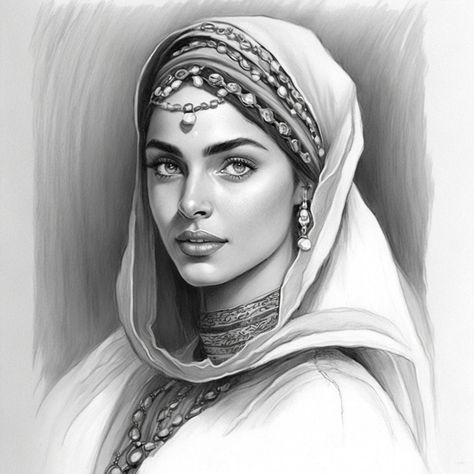
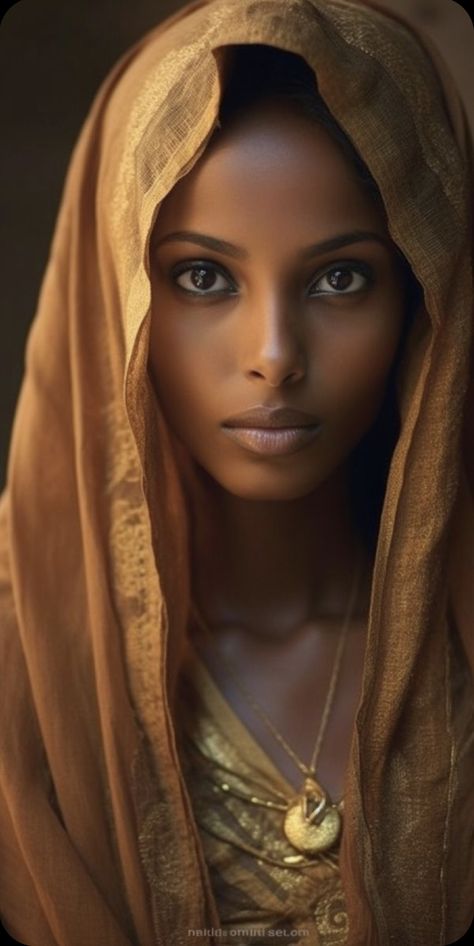

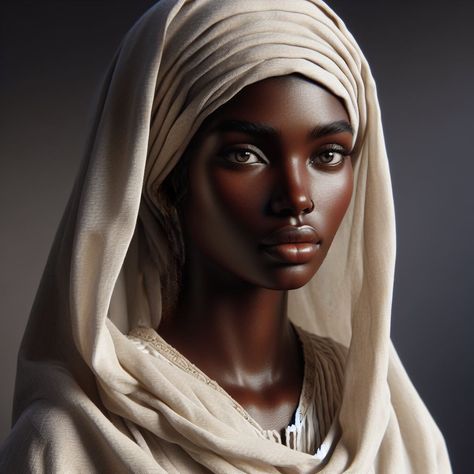

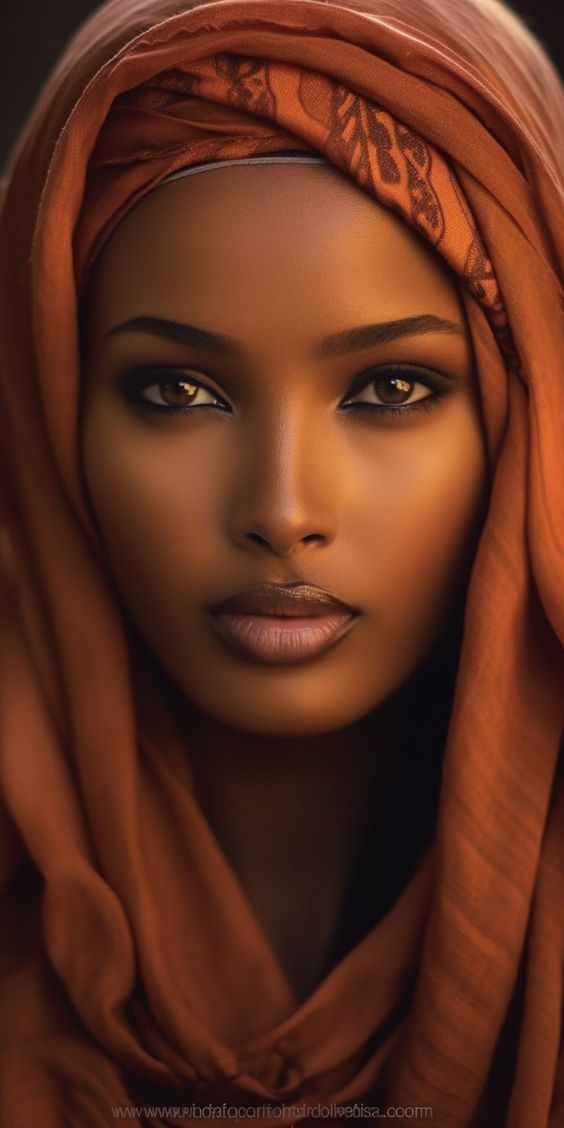
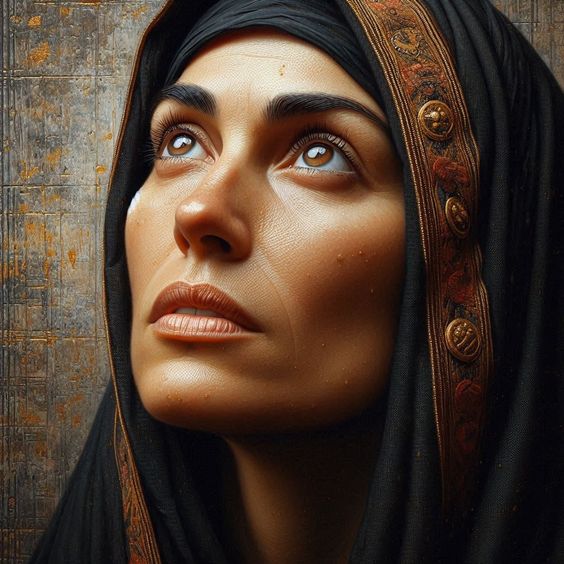
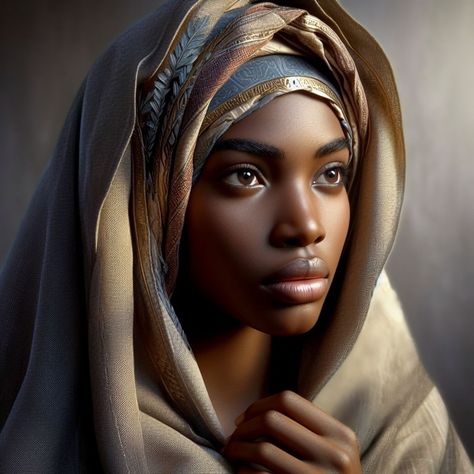
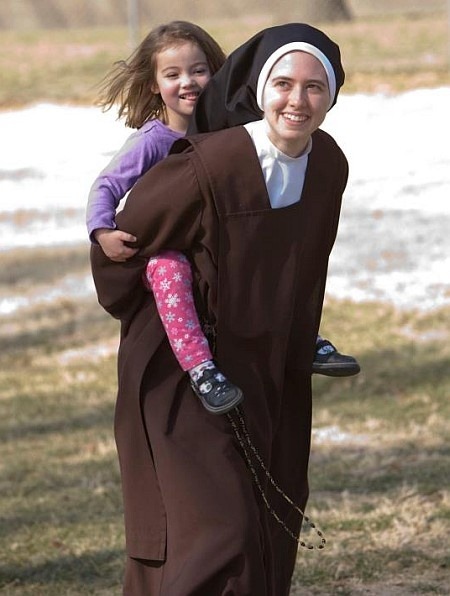


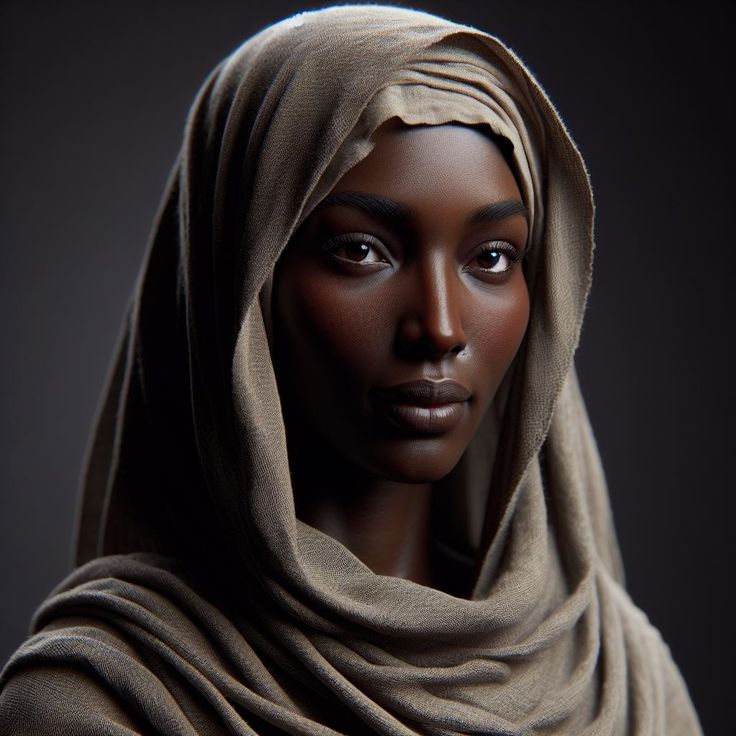
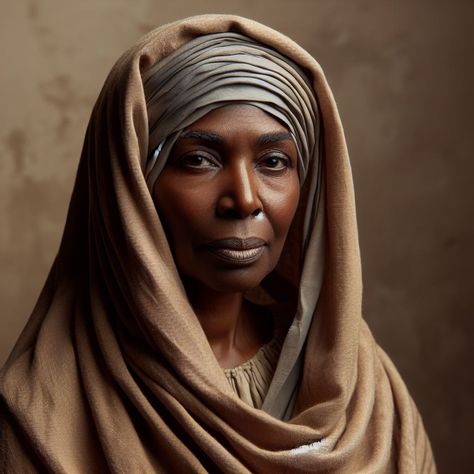
And in Madinah, the women of the Prophet were commanded not to appear in public among men and to remain in their homes.
The believing women at that time did not wear very covering clothing. They displayed their earrings, necklaces, bracelets, anklets, etc.
 وَلَا يُبۡدِينَ زِينَتَهُنَّ إِلَّا لِبُعُولَتِهِنَّ أَوۡ ءَابَآئِهِنَّ أَوۡ ءَابَآءِ بُعُولَتِهِنَّ أَوۡ أَبۡنَآئِهِنَّ أَوۡ أَبۡنَآءِ بُعُولَتِهِنَّ أَوۡ إِخۡوَٰنِهِنَّ أَوۡ بَنِيٓ إِخۡوَٰنِهِنَّ أَوۡ بَنِيٓ أَخَوَٰتِهِنَّ أَوۡ نِسَآئِهِنَّ أَوۡ مَا مَلَكَتۡ أَيۡمَٰنُهُنَّ أَوِ ٱلتَّٰبِعِينَ غَيۡرِ أُوْلِي ٱلۡإِرۡبَةِ مِنَ ٱلرِّجَالِ أَوِ ٱلطِّفۡلِ ٱلَّذِينَ لَمۡ يَظۡهَرُواْ عَلَىٰ عَوۡرَٰتِ ٱلنِّسَآءِۖ
وَلَا يُبۡدِينَ زِينَتَهُنَّ إِلَّا لِبُعُولَتِهِنَّ أَوۡ ءَابَآئِهِنَّ أَوۡ ءَابَآءِ بُعُولَتِهِنَّ أَوۡ أَبۡنَآئِهِنَّ أَوۡ أَبۡنَآءِ بُعُولَتِهِنَّ أَوۡ إِخۡوَٰنِهِنَّ أَوۡ بَنِيٓ إِخۡوَٰنِهِنَّ أَوۡ بَنِيٓ أَخَوَٰتِهِنَّ أَوۡ نِسَآئِهِنَّ أَوۡ مَا مَلَكَتۡ أَيۡمَٰنُهُنَّ أَوِ ٱلتَّٰبِعِينَ غَيۡرِ أُوْلِي ٱلۡإِرۡبَةِ مِنَ ٱلرِّجَالِ أَوِ ٱلطِّفۡلِ ٱلَّذِينَ لَمۡ يَظۡهَرُواْ عَلَىٰ عَوۡرَٰتِ ٱلنِّسَآءِۖ
And stay in your homes. And do not display yourselves as was the display of the times of Jahiliyyah.
[Surah al-Ahzab, verse 33]
 ٢٣٤٠ - نا عَبْدُ الرَّزَّاقِ قَالَ: أرنا مَعْمَرٌ , عَنِ ابْنِ أَبِي نَجِيحٍ , عَنْ مُجَاهِدٍ , فِي قَوْلِهِ تَعَالَى: {وَلَا تَبَرَّجْنَ تَبَرُّجَ الْجَاهِلِيَّةِ الْأُولَى} [الأحزاب: ٣٣] قَالَ: «كَانَتِ الْمَرْأَةُ تَتَمَشَّى بَيْنَ الرِّجَالِ فَذَلِكَ تَبَرُّجُ الْجَاهِلِيَّةِ»
٢٣٤٠ - نا عَبْدُ الرَّزَّاقِ قَالَ: أرنا مَعْمَرٌ , عَنِ ابْنِ أَبِي نَجِيحٍ , عَنْ مُجَاهِدٍ , فِي قَوْلِهِ تَعَالَى: {وَلَا تَبَرَّجْنَ تَبَرُّجَ الْجَاهِلِيَّةِ الْأُولَى} [الأحزاب: ٣٣] قَالَ: «كَانَتِ الْمَرْأَةُ تَتَمَشَّى بَيْنَ الرِّجَالِ فَذَلِكَ تَبَرُّجُ الْجَاهِلِيَّةِ»
[ص37 - كتاب تفسير عبد الرزاق]
Mujaahid said about the verse {And do not display yourselves as was the display of the times of Jahiliyyah} (Surah Al-Ahzab 33:33), he said: "Previously, a woman would walk among men (in a manner of vanity and to be noticed), and that was the display of the time of Jahiliyyah."
[Tafsir Abdurrazzaaq - Page 37]
 حدثني يعقوب، قال: ثنا ابن علية، قال: سمعت ابن أَبي نجيح، يقول في قوله (وَلا تَبَرَّجْنَ تَبَرُّجَ الْجَاهِلِيَّةِ الأولَى) قال: التبختر. وقيل إن التبرج هو إظهار الزينة، وإبراز المرأة محاسنها للرجال.
حدثني يعقوب، قال: ثنا ابن علية، قال: سمعت ابن أَبي نجيح، يقول في قوله (وَلا تَبَرَّجْنَ تَبَرُّجَ الْجَاهِلِيَّةِ الأولَى) قال: التبختر. وقيل إن التبرج هو إظهار الزينة، وإبراز المرأة محاسنها للرجال.
[تفسير الطبري صفحة 260 جزء 20]
Ibn Abi Najih said about the verse {And do not display yourselves as was the display of the times of Jahiliyyah} (Surah Al-Ahzab 33:33), he said: "'Tabarruj' means vanity and excessive behavior. It is also said that 'tabarruj' refers to showing adornments and emphasizing the beauty of the woman to men."
[Tafsir Tabari - Volume 20 - Page 260]
The women of the Prophet covered themselves and did not display their adornments, due to the verse {And stay in your homes. And do not display yourselves as was the display of the times of Jahiliyyah}.
Some believing free women did show their jewelry, as narrated by Muqaatil ibn Hayyaan. However, this practice changed after Surah al-Nur, verse 31 was revealed.
After the revelation of Surah al-Nur, verse 31, the believing women began to cover their necks, ears, and bosoms with their khimar.
 وقوله : ( وليضربن بخمرهن على جيوبهن ) يقول تعالى ذكره : وليلقين خمرهن ، وهي جمع خمار ، على جيوبهن ، ليسترن بذلك شعورهن وأعناقهن وقرطهن .
وقوله : ( وليضربن بخمرهن على جيوبهن ) يقول تعالى ذكره : وليلقين خمرهن ، وهي جمع خمار ، على جيوبهن ، ليسترن بذلك شعورهن وأعناقهن وقرطهن .
[تفسير الطبري صفحة 159 جزء 19]
Tabari said:
"{And they should draw their khumur over their bosoms}, let them draw their khimar over their bosoms (jayb) to cover their hair, neck, and earrings."
[Tafsir Tabari - Volume 19 - Page 159]
Notably, Tabari does not mention the face in the interpretation of this verse. The verse is thus about covering the bosoms, neck, and earrings.
These were indeed displayed by the believing women of that time. They covered their heads with a khimar that was draped backwards instead of forwards, which exposed their neck/cleavage and bosom, but also part of their ears.
This is confirmed by a narration from Muqaatil ibn Hayyan describing how women dressed at that time.
 قرأت على محمد بن الفضل، ثنا محمد بن علي بن الحسن، ثنا محمد ابن مزاحم، ثنا بكير بن معروف عن مقاتل بن حيان قوله: وقل للمؤمنات يغضضن من ابصارهن.
قال: بلغنا والله أعلم - ان جابر بن عبد الله الأنصاري حدث ان أسماء بنت مرشدة كانت في نخل لها في بني حارثة، فجعل النساء يدخلن عليها غير مئتزرات فيبدو ما في أرجلهن، يعني: الخلاخل وتبدو صدورهن وذوائبهن، فقالت أسماء: ما أقبح هذا، فانزل الله عز وجل في ذلك: وقل للمؤمنات يغضضن من ابصارهن فيقول: يخفضن من ابصارهن.
قرأت على محمد بن الفضل، ثنا محمد بن علي بن الحسن، ثنا محمد ابن مزاحم، ثنا بكير بن معروف عن مقاتل بن حيان قوله: وقل للمؤمنات يغضضن من ابصارهن.
قال: بلغنا والله أعلم - ان جابر بن عبد الله الأنصاري حدث ان أسماء بنت مرشدة كانت في نخل لها في بني حارثة، فجعل النساء يدخلن عليها غير مئتزرات فيبدو ما في أرجلهن، يعني: الخلاخل وتبدو صدورهن وذوائبهن، فقالت أسماء: ما أقبح هذا، فانزل الله عز وجل في ذلك: وقل للمؤمنات يغضضن من ابصارهن فيقول: يخفضن من ابصارهن.
[تفسير ابن أبي حاتم - ابن أبي حاتم الرازي - ج ٨ - الصفحة ٢٥٧٣]
Muqaatil ibn Hayyaan narrated from Jaabir ibn Abdullah al-Ansaari:
"Asmaa bint Marthad was at her palm trees in Banu Haritha. Women came to her without their cloaks, and their ankles, specifically their anklets, and parts of their bosoms and hair became visible.
Asmaa said: 'What an awful sight this is!'
Then the verse of Allah was revealed: 'And say to the believing women that they lower their gaze...' (Surah An-Nur 24:31). This means they should lower their gaze."
[Tafsir Ibn Abi Haatim - Volume 8 - Page 2573]
After the revelation of Surah al-Nur, verse 31, the believing women who had previously adhered to the dress of the Jahiliyyah period adjusted their clothing and began covering their bosoms, necks, and ears with their khimar.
This strongly indicates that not all believing women used to wear a Niqab. And that Surah al-Ahzab 59 was revealed for a specific incident and was not intended as a general obligation.
 قَوْلُهُ تَعَالَى: بِخُمُرِهِنَّ عَلَى جُيُوبِهِنَّ.
قَوْلُهُ تَعَالَى: بِخُمُرِهِنَّ عَلَى جُيُوبِهِنَّ.
١٤٤٠٥ - حَدَّثَنَا إِبْرَاهِيمُ بْنُ مَالِكٍ، ثنا الْحَسَنُ بْنُ الرَّبِيعِ، ثنا دَاوُدُ بْنِ عَبْدِ الرَّحْمَنِ عَنْ عَبْدِ اللَّهِ بْنِ عُثْمَانَ، عَنْ صَفِيَّةَ بِنْتِ شَيْبَةَ عَنْ عَائِشَةَ قَالَتْ: فَلَمَّا نَزَلَتْ:
وَلْيَضْرِبْنَ بِخُمُرِهِنَّ انْقَلَبَ رِجَالٌ مِنَ الأَنْصَارِ إِلَى نِسَائِهِمْ يِتْلُونَهَا عليهن، فقامت كل مرأة مِنْهُنَّ إِلَى مِرْطِهَا فَصَدَعَتْ مِنْهُ صِدْعَةً فَاخْتَمَرْتُ بها فأصبحن من الصبح وكأن على رؤسهن الْغِرْبَانَ
[ص2575 - كتاب تفسير ابن أبي حاتم]
'Aisha said: "When the verse 'And let them draw their khumur over their bosoms' was revealed, some men from the Ansar went to their wives to recite it to them. Each woman of them went to her mirt, tore a piece from it, and used it as khimar. By the morning prayer, they looked like women with black crows on their heads."
[Tafsir Ibn Abi Haatim - Page 2575]
 وَقَالَ أَحْمَدُ بْنُ شَبِيبٍ حَدَّثَنَا أَبِي، عَنْ يُونُسَ، قَالَ ابْنُ شِهَابٍ عَنْ عُرْوَةَ، عَنْ عَائِشَةَ ـ رضى الله عنها ـ قَالَتْ يَرْحَمُ اللَّهُ نِسَاءَ الْمُهَاجِرَاتِ الأُوَلَ، لَمَّا أَنْزَلَ اللَّهُ {وَلْيَضْرِبْنَ بِخُمُرِهِنَّ عَلَى جُيُوبِهِنَّ} شَقَّقْنَ مُرُوطَهُنَّ فَاخْتَمَرْنَ بِها.
وَقَالَ أَحْمَدُ بْنُ شَبِيبٍ حَدَّثَنَا أَبِي، عَنْ يُونُسَ، قَالَ ابْنُ شِهَابٍ عَنْ عُرْوَةَ، عَنْ عَائِشَةَ ـ رضى الله عنها ـ قَالَتْ يَرْحَمُ اللَّهُ نِسَاءَ الْمُهَاجِرَاتِ الأُوَلَ، لَمَّا أَنْزَلَ اللَّهُ {وَلْيَضْرِبْنَ بِخُمُرِهِنَّ عَلَى جُيُوبِهِنَّ} شَقَّقْنَ مُرُوطَهُنَّ فَاخْتَمَرْنَ بِها.
'Aisha said:
"May Allah have mercy on the women of the Muhajirun. When Allah revealed the words: 'And let them draw their khumur over their bosoms' [Surah Al-Nur verse 31], they tore their Murut (mantles) and made khimars from them."
(Sahih al-Bukhari 4758)
 حَدَّثَنَا أَبُو نُعَيْمٍ، حَدَّثَنَا إِبْرَاهِيمُ بْنُ نَافِعٍ، عَنِ الْحَسَنِ بْنِ مُسْلِمٍ، عَنْ صَفِيَّةَ بِنْتِ شَيْبَةَ، أَنَّ عَائِشَةَ ـ رضى الله عنها ـ كَانَتْ تَقُولُ لَمَّا نَزَلَتْ هَذِهِ الآيَةُ {وَلْيَضْرِبْنَ بِخُمُرِهِنَّ عَلَى جُيُوبِهِنَّ} أَخَذْنَ أُزْرَهُنَّ فَشَقَّقْنَهَا مِنْ قِبَلِ الْحَوَاشِي فَاخْتَمَرْنَ بِهَا.
حَدَّثَنَا أَبُو نُعَيْمٍ، حَدَّثَنَا إِبْرَاهِيمُ بْنُ نَافِعٍ، عَنِ الْحَسَنِ بْنِ مُسْلِمٍ، عَنْ صَفِيَّةَ بِنْتِ شَيْبَةَ، أَنَّ عَائِشَةَ ـ رضى الله عنها ـ كَانَتْ تَقُولُ لَمَّا نَزَلَتْ هَذِهِ الآيَةُ {وَلْيَضْرِبْنَ بِخُمُرِهِنَّ عَلَى جُيُوبِهِنَّ} أَخَذْنَ أُزْرَهُنَّ فَشَقَّقْنَهَا مِنْ قِبَلِ الْحَوَاشِي فَاخْتَمَرْنَ بِهَا.
'Aisha said:
"When Allah revealed the words: 'And let them draw their khumur over their bosoms' [Surah Al-Nur verse 31], we tore our aprons and used them as khimars."
(Sahih al-Bukhari 4759)
The action of the Sahabiyat after the revelation of Surah al-Nur verse 31 was that they made khimars and immediately wore them to put the revelation into practice.
 وَلَا يُبۡدِينَ زِينَتَهُنَّ إِلَّا لِبُعُولَتِهِنَّ أَوۡ ءَابَآئِهِنَّ أَوۡ ءَابَآءِ بُعُولَتِهِنَّ أَوۡ أَبۡنَآئِهِنَّ أَوۡ أَبۡنَآءِ بُعُولَتِهِنَّ أَوۡ إِخۡوَٰنِهِنَّ أَوۡ بَنِيٓ إِخۡوَٰنِهِنَّ أَوۡ بَنِيٓ أَخَوَٰتِهِنَّ أَوۡ نِسَآئِهِنَّ أَوۡ مَا مَلَكَتۡ أَيۡمَٰنُهُنَّ أَوِ ٱلتَّٰبِعِينَ غَيۡرِ أُوْلِي ٱلۡإِرۡبَةِ مِنَ ٱلرِّجَالِ أَوِ ٱلطِّفۡلِ ٱلَّذِينَ لَمۡ يَظۡهَرُواْ عَلَىٰ عَوۡرَٰتِ ٱلنِّسَآءِۖ
وَلَا يُبۡدِينَ زِينَتَهُنَّ إِلَّا لِبُعُولَتِهِنَّ أَوۡ ءَابَآئِهِنَّ أَوۡ ءَابَآءِ بُعُولَتِهِنَّ أَوۡ أَبۡنَآئِهِنَّ أَوۡ أَبۡنَآءِ بُعُولَتِهِنَّ أَوۡ إِخۡوَٰنِهِنَّ أَوۡ بَنِيٓ إِخۡوَٰنِهِنَّ أَوۡ بَنِيٓ أَخَوَٰتِهِنَّ أَوۡ نِسَآئِهِنَّ أَوۡ مَا مَلَكَتۡ أَيۡمَٰنُهُنَّ أَوِ ٱلتَّٰبِعِينَ غَيۡرِ أُوْلِي ٱلۡإِرۡبَةِ مِنَ ٱلرِّجَالِ أَوِ ٱلطِّفۡلِ ٱلَّذِينَ لَمۡ يَظۡهَرُواْ عَلَىٰ عَوۡرَٰتِ ٱلنِّسَآءِۖ
... and they should not reveal their adornment except to their husbands, their fathers, their husbands' fathers, their sons, or the sons of their husbands, their brothers and the sons of their brothers or the sons of their sisters, or their (Muslim) women or the female slaves they own or the old male servants who have no desire, or the children who are not aware of the private aspects of women.
[Surah al-Nur verse 31]
This verse adds that believing women should not expose their hidden adornments such as their ears, bosom, and neck, except to their mahram men.
Those Who Believe that Niqab is Obligatory
Many arguments have been presented by those who believe that wearing the Niqab is obligatory for Muslim women.
Many of these have already been addressed and explained in this article. For example, Surah al-Ahzab verse 59 is cited as evidence for a general obligation.
However, this is not the case, as the obligation was specific and concerned the safety of believing women, not 'awrah.
Besides this, there are many other arguments that will also be discussed. Below, these are addressed, and the arguments are listed.
Argument 1: Surah al-Ahzab Verse 59
 يَـٰٓأَيُّهَا ٱلنَّبِىُّ قُل لِّأَزْوَٰجِكَ وَبَنَاتِكَ وَنِسَآءِ ٱلْمُؤْمِنِينَ يُدْنِينَ عَلَيْهِنَّ مِن جَلَـٰبِيبِهِنَّ ۚ ذَٰلِكَ أَدْنَىٰٓ أَن يُعْرَفْنَ فَلَا يُؤْذَيْنَ ۗ وَكَانَ ٱللَّهُ غَفُورًۭا رَّحِيمًۭا ﴿٥٩﴾
يَـٰٓأَيُّهَا ٱلنَّبِىُّ قُل لِّأَزْوَٰجِكَ وَبَنَاتِكَ وَنِسَآءِ ٱلْمُؤْمِنِينَ يُدْنِينَ عَلَيْهِنَّ مِن جَلَـٰبِيبِهِنَّ ۚ ذَٰلِكَ أَدْنَىٰٓ أَن يُعْرَفْنَ فَلَا يُؤْذَيْنَ ۗ وَكَانَ ٱللَّهُ غَفُورًۭا رَّحِيمًۭا ﴿٥٩﴾
O Prophet, say to your wives, your daughters, and the women of the believers to draw their jilbabs over themselves. That is better, so that they may be recognized and not be harassed.
[Surah al-Ahzab verse 59]
Those who claim that the Niqab is obligatory use this verse to argue that Allah has made it obligatory for believing women to cover their faces.
However, the obligation had a specific reason, namely that this revelation came as a response to an incident where believing women were being harassed by wicked men.
Allah also indicates that this will make them be recognized as free women, so there is a context behind this revelation.
The context is that believing women needed to distinguish themselves from slave women because sometimes they were mistaken for slaves. This led to harassment from some men, including hypocrites and adulterers.
 حدثنا أبو جعفر الرازي وهشيم عن حصين عن أبي مالك قال كان نساء نبي الله صلى الله عليه وسلم يخرجن بالليل لحاجتهن وكان ناس من المنافقين يتعرضون لهن فيؤذين فشكوا ذلك فقيل ذلك للمنافقين فقالوا إنما نفعله بالإماء فنزلت هذه الآية يا أيها النبي قل لأزواجك وبناتك ونساء المؤمنين يدنين عليهن من جلابيبهن ذلك أدنى أن يعرفن فلا يؤذين
حدثنا أبو جعفر الرازي وهشيم عن حصين عن أبي مالك قال كان نساء نبي الله صلى الله عليه وسلم يخرجن بالليل لحاجتهن وكان ناس من المنافقين يتعرضون لهن فيؤذين فشكوا ذلك فقيل ذلك للمنافقين فقالوا إنما نفعله بالإماء فنزلت هذه الآية يا أيها النبي قل لأزواجك وبناتك ونساء المؤمنين يدنين عليهن من جلابيبهن ذلك أدنى أن يعرفن فلا يؤذين
[Tabaqat al-Kubra - Muhammad ibn Saad - Vol. 8 - Page 176]
Abu Malik reported:
"The wives of the Prophet (ﷺ) used to go out at night for their needs, and some of the hypocrites harassed them and did them harm. This was reported to the hypocrites, who said: 'We do this only with the slave women.'
Then the following verse was revealed: 'O Prophet, say to your wives, your daughters, and the women of the believers to draw their jilbabs over themselves. That is better, so that they may be recognized and not be harassed.'"
[Tabaqat al-Kubra 8/176]
Therefore, it is not the case that this revelation came because the face of a Muslim woman suddenly became 'awrah and needed to be covered.
Argument 2: Surah al-Nur Verse 31
Another argument is the interpretation of verse 31 from Surah al-Nur used by some.
 وَ لَا يُبْدِينَ زِينَتَهُنَّ إِلَّا لِبُعُولَتِهِنَّ أَوْ ءَابَائِهِنَّ أَوْ ءَابَاءِ بُعُولَتِهِنَّ أَوْ أَبْنَائِهِنَّ أَوْ أَبْنَاءِ بُعُولَتِهِنَّ أَوْ إِخْوَٰنِهِنَّ أَوْ بَنِيٓ إِخْوَٰنِهِنَّ أَوْ بَنِيٓ أَخَوَٰتِهِنَّ أَوْ نِسَاءِهِنَّ أَوْ مَا مَلَكَتْ أَيْمَٰنُهُنَّ أَوِ ٱلتَّٰبِعِينَ غَيْرِ أُوْلِي ٱلۡإِرْبَةِ مِنَ ٱلرِّجَالِ أَوِ ٱلطِّفْلِ ٱلَّذِينَ لَمْ يَظْهَرُواْ عَلَىٰ عَوْرَٰتِ ٱلنِّسَاءِۚ
وَ لَا يُبْدِينَ زِينَتَهُنَّ إِلَّا لِبُعُولَتِهِنَّ أَوْ ءَابَائِهِنَّ أَوْ ءَابَاءِ بُعُولَتِهِنَّ أَوْ أَبْنَائِهِنَّ أَوْ أَبْنَاءِ بُعُولَتِهِنَّ أَوْ إِخْوَٰنِهِنَّ أَوْ بَنِيٓ إِخْوَٰنِهِنَّ أَوْ بَنِيٓ أَخَوَٰتِهِنَّ أَوْ نِسَاءِهِنَّ أَوْ مَا مَلَكَتْ أَيْمَٰنُهُنَّ أَوِ ٱلتَّٰبِعِينَ غَيْرِ أُوْلِي ٱلۡإِرْبَةِ مِنَ ٱلرِّجَالِ أَوِ ٱلطِّفْلِ ٱلَّذِينَ لَمْ يَظْهَرُواْ عَلَىٰ عَوْرَٰتِ ٱلنِّسَاءِۚ
... and they should not reveal their adornment except to their husbands, their fathers, their husbands' fathers, their sons, or the sons of their husbands, their brothers and the sons of their brothers or the sons of their sisters, or their (Muslim) women or the female slaves they own or the old male servants who have no desire, or the children who are not aware of the private aspects of women.
[Surah al-Nur verse 31]
As you can see, there are several things in parentheses. These are interpretations added to the translation of the verse.
Firstly, it is assumed that 'what is visible' includes the eyes, hands, and clothing. Some remove the hands from this interpretation.
Those who believe that the Niqab is obligatory think that the face and hands are among the hidden adornments. This is because they follow the interpretation of Ibn Mas'ud.
 حدثنا وكيع عن سفيان عن أبي إسحاق عن أبي الأحوص عن عبد الله: * (ولا يبدين زينتهن إلا ما ظهر منها) * قال: الثياب.
حدثنا وكيع عن سفيان عن أبي إسحاق عن أبي الأحوص عن عبد الله: * (ولا يبدين زينتهن إلا ما ظهر منها) * قال: الثياب.
[Musannaf Ibn Abi Shaybah - Vol. 3 - Page 384]
Ibn Mas'ud said: "{and they should not reveal their adornment except what is apparent} refers to clothing."
 حدثنا أبو خالد الأحمر عن حجاج عن أبي إسحاق عن أبي الأحوص عن عبد الله قال: الزينة زينتان: زينة ظاهرة وزينة باطنة لا يراها إلا الزوج وأما الزينة الظاهرة فالثياب وأما الزينة الباطنة فالكحل والسوار والخاتم.
حدثنا أبو خالد الأحمر عن حجاج عن أبي إسحاق عن أبي الأحوص عن عبد الله قال: الزينة زينتان: زينة ظاهرة وزينة باطنة لا يراها إلا الزوج وأما الزينة الظاهرة فالثياب وأما الزينة الباطنة فالكحل والسوار والخاتم.
[Musannaf Ibn Abi Shaybah - Vol. 3 - Page 384]
Ibn Mas'ud said:
"There are two types of adornment: visible and hidden. Only the husband sees the hidden adornment.
As for visible adornment, it consists of clothing.
Hidden adornments include kohl, bracelets, and rings."
This is a confirmed view of Ibn Mas'ud, but of course, there are many who disagree with him, such as Ibn 'Abbas, Ibn 'Umar, and many of the Tabi'in.
Argument 3: And ask them from behind a Hijab
Some claim that Surah al-Ahzab, verse 53 was applicable to all believing women, and that every believing woman must separate herself with a barrier and wear a face veil.
This is incorrect because Surah al-Ahzab, verse 53 was revealed specifically for the Prophet's (ﷺ) wives. It did not intend that they should wear a face veil but rather that they should separate themselves with a barrier, such as a wall or curtain.
Therefore, it is incorrect to assert that this verse applies to all believing women and that it intended them to wear the face veil. The context of the verse is different.
The Prophet's (ﷺ) wives were instructed to separate themselves from non-mahram men with a barrier, not with a face veil. The revelation about the face veil came several verses after Ayah al-Hijab (Surah al-Ahzab, verse 53).
 عَائِشَةَ ـ رضى الله عنها ـ زَوْجَ النَّبِيِّ صلى الله عليه وسلم قَالَتْ كَانَ عُمَرُ بْنُ الْخَطَّابِ يَقُولُ لِرَسُولِ اللَّهِ صلى الله عليه وسلم احْجُبْ نِسَاءَكَ. قَالَتْ فَلَمْ يَفْعَلْ، وَكَانَ أَزْوَاجُ النَّبِيِّ صلى الله عليه وسلم يَخْرُجْنَ لَيْلاً إِلَى لَيْلٍ قِبَلَ الْمَنَاصِعِ، خَرَجَتْ سَوْدَةُ بِنْتُ زَمْعَةَ، وَكَانَتِ امْرَأَةً طَوِيلَةً فَرَآهَا عُمَرُ بْنُ الْخَطَّابِ وَهْوَ فِي الْمَجْلِسِ فَقَالَ عَرَفْتُكِ يَا سَوْدَةُ. حِرْصًا عَلَى أَنْ يُنْزَلَ الْحِجَابُ. قَالَتْ فَأَنْزَلَ اللَّهُ عَزَّ وَجَلَّ آيَةَ الْحِجَابِ.
عَائِشَةَ ـ رضى الله عنها ـ زَوْجَ النَّبِيِّ صلى الله عليه وسلم قَالَتْ كَانَ عُمَرُ بْنُ الْخَطَّابِ يَقُولُ لِرَسُولِ اللَّهِ صلى الله عليه وسلم احْجُبْ نِسَاءَكَ. قَالَتْ فَلَمْ يَفْعَلْ، وَكَانَ أَزْوَاجُ النَّبِيِّ صلى الله عليه وسلم يَخْرُجْنَ لَيْلاً إِلَى لَيْلٍ قِبَلَ الْمَنَاصِعِ، خَرَجَتْ سَوْدَةُ بِنْتُ زَمْعَةَ، وَكَانَتِ امْرَأَةً طَوِيلَةً فَرَآهَا عُمَرُ بْنُ الْخَطَّابِ وَهْوَ فِي الْمَجْلِسِ فَقَالَ عَرَفْتُكِ يَا سَوْدَةُ. حِرْصًا عَلَى أَنْ يُنْزَلَ الْحِجَابُ. قَالَتْ فَأَنْزَلَ اللَّهُ عَزَّ وَجَلَّ آيَةَ الْحِجَابِ.
'Aisha reported:
Umar bin Al-Khattab said to the Messenger of Allah (ﷺ), "Enjoin Hijab upon your women." But he did not do so. The Prophet's (ﷺ) wives used to go out at night to a place called Al-Manasi. One night, Sawda, the daughter of Zam'a, went out, and she was a tall woman. Umar bin Al-Khattab saw her while he was in a gathering and said, "I have recognized you, O Sawda!" Umar said this because he was keen for the revelation to come regarding Hijab.
Then Allah revealed the verses about Hijab.
[Sahih al-Bukhari 6240]
Umar recognized Sawda because she was outside without the face veil. At that time, it was not yet obligatory.
Umar wanted the Prophet's (ﷺ) wives not to appear to the outside world and to be seen only behind a Hijab (barrier like a wall or curtain).
Then Allah revealed the verse: {And if you ask [the Prophet's (ﷺ) wives] for something, ask them from behind a Hijab, that is purer for your hearts and their hearts}.
 وَإِذَا سَأَلْتُمُوهُنَّ مَتَـٰعًۭا فَسْـَٔلُوهُنَّ مِن وَرَآءِ حِجَابٍۢ ۚ ذَٰلِكُمْ أَطْهَرُ لِقُلُوبِكُمْ وَقُلُوبِهِنَّ
وَإِذَا سَأَلْتُمُوهُنَّ مَتَـٰعًۭا فَسْـَٔلُوهُنَّ مِن وَرَآءِ حِجَابٍۢ ۚ ذَٰلِكُمْ أَطْهَرُ لِقُلُوبِكُمْ وَقُلُوبِهِنَّ
And if you ask [the Prophet's (ﷺ) wives] for something, ask them from behind a Hijab, that is purer for your hearts and for their hearts.
(Surah al-Ahzab, verse 53)
This is therefore a special rule for the Prophet's (ﷺ) wives, and it was not revealed for other believing women.
Ayah al-Hijab is about a barrier that had to be placed between the Prophet's (ﷺ) wives and non-mahram believing men.
 عَنْ عَائِشَةَ ـ رضى الله عنها ـ قَالَتْ خَرَجَتْ سَوْدَةُ بَعْدَ مَا ضُرِبَ الْحِجَابُ لِحَاجَتِهَا، وَكَانَتِ امْرَأَةً جَسِيمَةً لاَ تَخْفَى عَلَى مَنْ يَعْرِفُهَا، فَرَآهَا عُمَرُ بْنُ الْخَطَّابِ فَقَالَ يَا سَوْدَةُ أَمَا وَاللَّهِ مَا تَخْفَيْنَ عَلَيْنَا، فَانْظُرِي كَيْفَ تَخْرُجِينَ، قَالَتْ فَانْكَفَأَتْ رَاجِعَةً، وَرَسُولُ اللَّهِ صلى الله عليه وسلم فِي بَيْتِي، وَإِنَّهُ لَيَتَعَشَّى. وَفِي يَدِهِ عَرْقٌ فَدَخَلَتْ فَقَالَتْ يَا رَسُولَ اللَّهِ إِنِّي خَرَجْتُ لِبَعْضِ حَاجَتِي فَقَالَ لِي عُمَرُ كَذَا وَكَذَا. قَالَتْ فَأَوْحَى اللَّهُ إِلَيْهِ ثُمَّ رُفِعَ عَنْهُ وَإِنَّ الْعَرْقَ فِي يَدِهِ مَا وَضَعَهُ فَقَالَ " إِنَّهُ قَدْ أُذِنَ لَكُنَّ أَنْ تَخْرُجْنَ لِحَاجَتِكُنَّ ".
عَنْ عَائِشَةَ ـ رضى الله عنها ـ قَالَتْ خَرَجَتْ سَوْدَةُ بَعْدَ مَا ضُرِبَ الْحِجَابُ لِحَاجَتِهَا، وَكَانَتِ امْرَأَةً جَسِيمَةً لاَ تَخْفَى عَلَى مَنْ يَعْرِفُهَا، فَرَآهَا عُمَرُ بْنُ الْخَطَّابِ فَقَالَ يَا سَوْدَةُ أَمَا وَاللَّهِ مَا تَخْفَيْنَ عَلَيْنَا، فَانْظُرِي كَيْفَ تَخْرُجِينَ، قَالَتْ فَانْكَفَأَتْ رَاجِعَةً، وَرَسُولُ اللَّهِ صلى الله عليه وسلم فِي بَيْتِي، وَإِنَّهُ لَيَتَعَشَّى. وَفِي يَدِهِ عَرْقٌ فَدَخَلَتْ فَقَالَتْ يَا رَسُولَ اللَّهِ إِنِّي خَرَجْتُ لِبَعْضِ حَاجَتِي فَقَالَ لِي عُمَرُ كَذَا وَكَذَا. قَالَتْ فَأَوْحَى اللَّهُ إِلَيْهِ ثُمَّ رُفِعَ عَنْهُ وَإِنَّ الْعَرْقَ فِي يَدِهِ مَا وَضَعَهُ فَقَالَ " إِنَّهُ قَدْ أُذِنَ لَكُنَّ أَنْ تَخْرُجْنَ لِحَاجَتِكُنَّ ".
'Aisha reported:
"Sawda went out after Ayah al-Hijab was revealed to attend to her needs. She was a tall woman who could not be easily hidden from those who knew her. Umar ibn al-Khattab saw her and said: 'O Sawda, by Allah, you cannot remain hidden from us, so see how you go out (without separation).' She then turned back while the Messenger of Allah (ﷺ) was in my house having dinner with a piece of meat in his hand. She entered and said: 'O Messenger of Allah, I went out for my needs, and Umar said this and that to me.' Then revelation came to him, and when the revelation ended, and the piece of meat was still in his hand because he had not put it down, he said: 'You have been permitted to go out for your needs.'"
[Sahih al-Bukhari 4795]
After the revelation of Ayah al-Hijab, Sawda was recognized by Umar when she went out at night for her needs.
Umar recognized her because the face veil was not yet obligatory. He advised her not to appear outside without a barrier because Ayah al-Hijab required the Prophet's wives to separate from non-mahram men.
Umar wanted her not to be recognized (by going outside without being hidden) through the verse about al-Hijab.
Sawda then told the Prophet (ﷺ), and he clarified that his wives could go out for their needs, even if they might be recognized.
It seems that Umar had two instances where he recognized Sawda outside. The first time he recognized her and commented was before Ayah al-Hijab was revealed.
Umar requested the Prophet to have his wives practice al-Hijab, separating themselves with something like a wall or curtain from non-mahrams.
After the revelation of Ayah al-Hijab, Umar recognized her again when she went out at night for her needs. He told her to separate herself and not go out in a manner where others could recognize her.
Sawda then went to the Prophet (ﷺ), and he clarified that there is an exception for going out for needs.
 أخبرنا محمد بن عمر حدثني معمر ومحمد عن الزهري عن نبهان عن أم سلمة أنها كانت عند النبي صلى الله عليه وسلم هي وميمونة قالت فبينا نحن عنده أقبل بن أم مكتوم فدخل عليه وذلك بعد أن أمر بالحجاب فقال النبي صلى الله عليه وسلم احتجبا منه قلنا يا رسول الله أليس هو أعمى لا يبصر ولا يعرفنا قال أفعمياوان أنتما ألستما تبصرانه
أخبرنا محمد بن عمر حدثني معمر ومحمد عن الزهري عن نبهان عن أم سلمة أنها كانت عند النبي صلى الله عليه وسلم هي وميمونة قالت فبينا نحن عنده أقبل بن أم مكتوم فدخل عليه وذلك بعد أن أمر بالحجاب فقال النبي صلى الله عليه وسلم احتجبا منه قلنا يا رسول الله أليس هو أعمى لا يبصر ولا يعرفنا قال أفعمياوان أنتما ألستما تبصرانه
[الطبقات الكبرى - محمد بن سعد - ج ٨ - الصفحة ١٧٦]
Umm Salama said: "We were with the Prophet (ﷺ), along with Maymuna. While we were with him, Ibn Umm Maktum came in, and this was after the command of Hijab had been given. The Prophet (ﷺ) said: 'Perform Hijab from him.' We said: 'O Messenger of Allah, but he is blind and cannot see us or recognize us.' He replied: 'Are you also blind? Can you not see him?'"
[Tabaqat al-Kubraa - Volume 8 - Page 176]
The Prophet's (ﷺ) wives were therefore commanded to practice Hijab with everyone who was a non-mahram, which meant placing a barrier (curtain or wall) between them and non-mahrams, even if the person was blind.
Ayah al-Hijab is thus about separating from non-mahrams by placing a barrier between them. This verse does not address face covering, as that revelation came several verses after Ayah al-Hijab.
Thus, at the time of the revelation of this verse, the Prophet's (ﷺ) wives and other believing women were not yet commanded to cover their faces (in a specific situation for safety).
Argument 4: Hadith that the entire woman is 'awrah
 حَدَّثَنَا مُحَمَّدُ بْنُ بَشَّارٍ، حَدَّثَنَا عَمْرُو بْنُ عَاصِمٍ، حَدَّثَنَا هَمَّامٌ، عَنْ قَتَادَةَ، عَنْ مُوَرِّقٍ، عَنْ أَبِي الأَحْوَصِ، عَنْ عَبْدِ اللَّهِ، عَنِ النَّبِيِّ صلى الله عليه وسلم قَالَ " الْمَرْأَةُ عَوْرَةٌ فَإِذَا خَرَجَتِ اسْتَشْرَفَهَا الشَّيْطَانُ " . قَالَ أَبُو عِيسَى هَذَا حَدِيثٌ حَسَنٌ غَرِيبٌ .
حَدَّثَنَا مُحَمَّدُ بْنُ بَشَّارٍ، حَدَّثَنَا عَمْرُو بْنُ عَاصِمٍ، حَدَّثَنَا هَمَّامٌ، عَنْ قَتَادَةَ، عَنْ مُوَرِّقٍ، عَنْ أَبِي الأَحْوَصِ، عَنْ عَبْدِ اللَّهِ، عَنِ النَّبِيِّ صلى الله عليه وسلم قَالَ " الْمَرْأَةُ عَوْرَةٌ فَإِذَا خَرَجَتِ اسْتَشْرَفَهَا الشَّيْطَانُ " . قَالَ أَبُو عِيسَى هَذَا حَدِيثٌ حَسَنٌ غَرِيبٌ .
The Prophet (ﷺ) said:
"The woman is 'awrah, so when she goes outside, the Shaytan tries to entice her."
[Sunan Tirmidhi 1173]
The Hadith is classified as Hasan Gharib by Imam Tirmidhi. It does not achieve a high status of authenticity, but it is an accepted narration.
Those who believe that the Niqab is obligatory use this Hadith to indicate that the woman's face and hands are 'awrah.
It is incorrect to claim this because the Hadith has a general wording, stating that the woman is 'awrah. For consistency, one would expect them to say that even the eyes are 'awrah, but this is not what they believe.
The Hadith is therefore general and contains exceptions. Many reports indicate that the 'awrah of a woman is everything except the face and hands.
If those who claim that the Niqab is obligatory also make exceptions, then they are not as consistent as they claim to be. The eyes can also be a source of temptation, but they do not believe that these are 'awrah.
 أخبرنا محمد بن الحسن بن هارون، قال: حدثنا محمد بن الصباح، قال: حدثنا عبد الله بن رجاء، عن ابن عجلان، عن سمي، عن أبي بكر بن عبد قال قال: كل شيء من المرأة عورة حتى ظفرها
أخبرنا محمد بن الحسن بن هارون، قال: حدثنا محمد بن الصباح، قال: حدثنا عبد الله بن رجاء، عن ابن عجلان، عن سمي، عن أبي بكر بن عبد قال قال: كل شيء من المرأة عورة حتى ظفرها
[أحكام النسا ص33 من ابو بكر الخلال]
Abu Bakr ibn Abd al-Rahman (student of Abu Hurayrah) said: "Everything of the woman is 'awrah, even her fingernail."
[Ahkam an-Nisaa - Abu Bakr al-Khallal - Page 33 - Athar 23]
Imam Ahmad also shares this view, that everything of the woman is 'awrah, even her fingernail. He says that her face and hands are 'awrah, and aligns with Ibn Mas'oud's interpretation of Surah al-Nur verse 31.
 18 - أخبرني أحمد بن محمد بن مطر، قال: حدثنا أبو طالب، أنه سمع أبا عبد الله يقول: ظفر المرأة عورة، واذا خرجت فلا يبين منها لا يدها ولا ظفرها ولا خفها، فإن الخف يصف القدم، وأحب إليَّ أن تجعل كفها إلى عند يدها، حتى إذا خرجت يدها لا يبين منها شيء.
18 - أخبرني أحمد بن محمد بن مطر، قال: حدثنا أبو طالب، أنه سمع أبا عبد الله يقول: ظفر المرأة عورة، واذا خرجت فلا يبين منها لا يدها ولا ظفرها ولا خفها، فإن الخف يصف القدم، وأحب إليَّ أن تجعل كفها إلى عند يدها، حتى إذا خرجت يدها لا يبين منها شيء.
كتاب أحكام النسا ص32 من ابو بكر الخلال
Imam Ahmad said:
"The woman's fingernail is 'awrah, and when she goes outside, her hands, fingernails, and feet should not be visible. The leather shoes (khoeffayn) describe the foot (so she should avoid this), and I prefer that she cover her hands with long gloves so that nothing of her hands is visible."
[Ahkaam an-Nisaa - Abu Bakr al-Khallal - Page 32 - Athar 18]
We respect Imam Ahmad and everyone who shares the opinion that the face and hands are 'awrah, though we do not agree with them on this matter.
Many others hold the view that the face and hands are not 'awrah, and this seems to be the more correct opinion.
Argument 5: Covering the Face During Ihram
 وَحَدَّثَنِي عَنْ مَالِكٍ، عَنْ هِشَامِ بْنِ عُرْوَةَ، عَنْ فَاطِمَةَ بِنْتِ الْمُنْذِرِ، أَنَّهَا قَالَتْ كُنَّا نُخَمِّرُ وُجُوهَنَا وَنَحْنُ مُحْرِمَاتٌ وَنَحْنُ مَعَ أَسْمَاءَ بِنْتِ أَبِي بَكْرٍ الصِّدِّيقِ .
وَحَدَّثَنِي عَنْ مَالِكٍ، عَنْ هِشَامِ بْنِ عُرْوَةَ، عَنْ فَاطِمَةَ بِنْتِ الْمُنْذِرِ، أَنَّهَا قَالَتْ كُنَّا نُخَمِّرُ وُجُوهَنَا وَنَحْنُ مُحْرِمَاتٌ وَنَحْنُ مَعَ أَسْمَاءَ بِنْتِ أَبِي بَكْرٍ الصِّدِّيقِ .
Fatima bint al-Mundhir said: "We covered our faces while in a state of Ihram in the company of Asma bint Abi Bakr as-Siddiq."
[Al-Muwatta Book 20, Hadith 16]
It is claimed that if the face were not 'awrah, Fatima bint al-Mundhir and Asmaa bint Abi Bakr would not have done this.
The prohibition of the Niqab during Ihram for women is authentically reported by Bukhari and others. So how do we understand these actions?
It is incorrect to claim that the women considered their faces 'awrah and therefore covered their faces during Ihram. It was rather an allowed matter, not an obligation to cover the face.
There is indeed a prohibition on the Niqab during Ihram, so if it were truly obligatory, it would not have been prohibited to cover the face in this manner.
 اَ تَلْبَسُوا الْقَمِيصَ وَلاَ السَّرَاوِيلاَتِ وَلاَ الْعَمَائِمَ، وَلاَ الْبَرَانِسَ إِلاَّ أَنْ يَكُونَ أَحَدٌ لَيْسَتْ لَهُ نَعْلاَنِ، فَلْيَلْبَسِ الْخُفَّيْنِ، وَلْيَقْطَعْ أَسْفَلَ مِنَ الْكَعْبَيْنِ، وَلاَ تَلْبَسُوا شَيْئًا مَسَّهُ زَعْفَرَانٌ، وَلاَ الْوَرْسُ، وَلاَ تَنْتَقِبِ الْمَرْأَةُ الْمُحْرِمَةُ وَلاَ تَلْبَسِ الْقُفَّازَيْنِ
اَ تَلْبَسُوا الْقَمِيصَ وَلاَ السَّرَاوِيلاَتِ وَلاَ الْعَمَائِمَ، وَلاَ الْبَرَانِسَ إِلاَّ أَنْ يَكُونَ أَحَدٌ لَيْسَتْ لَهُ نَعْلاَنِ، فَلْيَلْبَسِ الْخُفَّيْنِ، وَلْيَقْطَعْ أَسْفَلَ مِنَ الْكَعْبَيْنِ، وَلاَ تَلْبَسُوا شَيْئًا مَسَّهُ زَعْفَرَانٌ، وَلاَ الْوَرْسُ، وَلاَ تَنْتَقِبِ الْمَرْأَةُ الْمُحْرِمَةُ وَلاَ تَلْبَسِ الْقُفَّازَيْنِ
A person stood up and asked: "O Messenger of Allah, what clothing is permitted during Ihram?"
The Prophet (ﷺ) replied: "Do not wear a shirt or trousers, headwear (like a turban), or a cloak with a hood. If someone has no shoes, they may wear leather socks, provided they are short enough to cover above the ankles. Also, do not wear anything that has been perfumed with Wars or saffron.
And a woman in Ihram must not wear a Niqab or gloves."
[Sahih al-Bukhari 1838]
 وَحَدَّثَنِي عَنْ مَالِكٍ، عَنْ نَافِعٍ، أَنَّ عَبْدَ اللَّهِ بْنَ عُمَرَ، كَانَ يَقُولُ لاَ تَنْتَقِبُ الْمَرْأَةُ الْمُحْرِمَةُ وَلاَ تَلْبَسُ الْقُفَّازَيْنِ .
وَحَدَّثَنِي عَنْ مَالِكٍ، عَنْ نَافِعٍ، أَنَّ عَبْدَ اللَّهِ بْنَ عُمَرَ، كَانَ يَقُولُ لاَ تَنْتَقِبُ الْمَرْأَةُ الْمُحْرِمَةُ وَلاَ تَلْبَسُ الْقُفَّازَيْنِ .
'Abdullah ibn 'Umar said that a woman in Ihram should not wear a Niqab nor gloves."
[Al-Muwatta Book 20, Hadith 15]
However, it is permissible to cover the face in a manner where the garment is not tightly bound to the face and has no openings for the eyes.
 حدثنا أبو بكر قال حدثنا حاتم بن إسماعيل عن جعفر عن أبيه أن عليا كان ينهي النساء عن النقاب وهن حرم، ولكن يسدلن الثوب عن وجوههن سدلا.
حدثنا أبو بكر قال حدثنا حاتم بن إسماعيل عن جعفر عن أبيه أن عليا كان ينهي النساء عن النقاب وهن حرم، ولكن يسدلن الثوب عن وجوههن سدلا.
[المصنف - ابن أبي شيبة الكوفي - ج ٤ - الصفحة ٣٧٩]
'Ali forbade women to wear the Niqab during Ihram (as mentioned in the Hadith), but they could let their garments hang over their faces.
[Musannaf Ibn Abi Shaybah - Volume 4 - Page 379]
It is completely optional for a woman to cover her face during Ihram. It is not an obligation for her to do so. This is made clear by the sayings of 'Aisha and Imam Malik.
 قال ابن القاسم:
أن مالكا كان يوسع للمرأة أن تسدل رداءها من فوق رأسها على وجهها إذا أرادت سترا فان كانت لا تريد سترا فلا تسدل
قال ابن القاسم:
أن مالكا كان يوسع للمرأة أن تسدل رداءها من فوق رأسها على وجهها إذا أرادت سترا فان كانت لا تريد سترا فلا تسدل
[المدونة باب الحج 1/463]
Ibn Al-Qasim said:
"Malik said that it was permissible for a woman to let her garment fall from above her head over her face if she desired covering. And if she did not wish to cover, she did not need to let it fall."
[Al-Muduwanah - Ibn Sahnoun - Chapter on Hajj - Volume 2 - Page 463]
 قلت : فهل كان يأمرها مالك إذا أسدلت رداءها أن تجافيه عن وجهها ؟
قلت : فهل كان يأمرها مالك إذا أسدلت رداءها أن تجافيه عن وجهها ؟
قال : ما علمت أنه كان يأمرها بذلك ، قلت : وإن أصاب وجهها الرداء ؟
قال : ما علمت أن مالكا ينهى عن أن يصيب الرداء وجهها إذا أسدلته . قلت : فهل كان يكره للمحرمة أن ترفع خمارها من أسفل إلى رأسها على وجهها ؟ قال : لم أسمع من مالك في هذا شيئا ولا يشبه هذا السدل ، قال : لأن هذا لا يثبت إذا رفعته حتى تعقده ، قال فعليها إن فعلت الفدية .
[المدونة باب الحج 1/463]
I asked: Did Malik command that when a woman let her garment fall, she should keep it away from her face?
Ibn al-Qasim replied: "I do not know if he commanded her to do so (keeping the garment away from the face)."
I asked: What if the garment touches her face?
Ibn al-Qasim replied: "I do not know of Malik forbidding the garment from touching the face if it is let down."
I asked: "Did Malik dislike a woman in Ihram lifting her veil from below to cover her face?"
He replied: "I have not heard from Malik on this matter, and it does not resemble letting the garment fall. This cannot stay in place without being tied, so if she does it, she must make expiation."
[Al-Muduwanah - Ibn Sahnoun - Chapter on Hajj - Volume 2 - Page 463]
 قلت : أرأيت المحرمة تتبرقع وتجافيه عن وجهها هل يكرهه مالك ؟
قلت : أرأيت المحرمة تتبرقع وتجافيه عن وجهها هل يكرهه مالك ؟
قال : نعم ، قلت : ويرى فيه الكفارة إن فعلت ؟
قال : نعم .
[المدونة باب الحج 1/464]
I asked: What about a woman in Ihram wearing a Niqab and keeping it away from her face? Does Malik find this undesirable?
He said: Yes. I asked: And does he believe it requires expiation if she does it?
He said: Yes.
[Al-Muduwanah - Ibn Sahnoun - Chapter on Hajj - Volume 1 - Page 464]
So a woman should not wear a Niqab during Ihram, even if she lets it fall from above her head to her face. She must not wear a face veil with openings for the eyes or two eyes.
 ( وأخبرنا ) أبو عبد الله الحافظ أنبأ أبو عمرو بن مطر ثنا يحيى بن محمد ثنا عبيد الله بن معاذ ثنا أبي ثنا شعبة ، عن يزيد الرشك ، عن معاذة ، عن عائشة رضي الله عنها قالت : المحرمة تلبس من الثياب ما شاءت إلا ثوبا مسه ورس أو زعفران ولا تتبرقع ولا تلثم وتسدل الثوب على وجهها إن شاءت .
( وأخبرنا ) أبو عبد الله الحافظ أنبأ أبو عمرو بن مطر ثنا يحيى بن محمد ثنا عبيد الله بن معاذ ثنا أبي ثنا شعبة ، عن يزيد الرشك ، عن معاذة ، عن عائشة رضي الله عنها قالت : المحرمة تلبس من الثياب ما شاءت إلا ثوبا مسه ورس أو زعفران ولا تتبرقع ولا تلثم وتسدل الثوب على وجهها إن شاءت .
[كتاب السنن الكبرى صفحة 48 جزء 5]
'Aisha said:
"A woman in Ihram may wear any clothing she likes, except a garment that has been treated with Wars or saffron, and she may not wear a face veil (Niqab) or a covering veil; but she may let her garment hang over her face if she wishes."
[Sunan al-Kubraa - Volume 5 - Page 48]
These statements clarify that a woman has the option to cover her face with her garment, and it is not obligatory for her to do so. This provides evidence that the face is not 'awrah.
Additionally, the prohibition on a face veil during Ihram clearly indicates that the face cannot be 'awrah.
Although it is not obligatory for her to cover her face during Ihram, it is recommended for her to do so (without Niqab), and this is the opinion of Imam Shafi'i. She may use a face veil that she pulls down from above her head and lets fall over her face. This face veil should not have openings for the eyes (i.e., not a Niqab).
 وأحب للمشهورة بالجمال ان تطوف وتسعى ليلا وإن طافت بالنهار سدلت ثوبها على وجهها أو طافت في ستر
وأحب للمشهورة بالجمال ان تطوف وتسعى ليلا وإن طافت بالنهار سدلت ثوبها على وجهها أو طافت في ستر
[كتاب الأم - الإمام الشافعي - ج ٢ - الصفحة ٢٣٢]
Imam al-Shafi'i said:
"And I prefer that a woman who is known for her beauty perform ṭawāf and sa‘y at night. And that if she performs ṭawāf during the day, that she lets her garment hang over her face, or performs ṭawāf from behind a covering."
[Al-Umm - Volume 2 - Page 232]
Argument 6: Women Were Not Recognized During the Fajr Prayer
 باب فِي كَمْ تُصَلِّي الْمَرْأَةُ فِي الثِّيَابِ
باب فِي كَمْ تُصَلِّي الْمَرْأَةُ فِي الثِّيَابِ
أَنَّ عَائِشَةَ، قَالَتْ لَقَدْ كَانَ رَسُولُ اللَّهِ صلى الله عليه وسلم يُصَلِّي الْفَجْرَ، فَيَشْهَدُ مَعَهُ نِسَاءٌ مِنَ الْمُؤْمِنَاتِ مُتَلَفِّعَاتٍ فِي مُرُوطِهِنَّ ثُمَّ يَرْجِعْنَ إِلَى بُيُوتِهِنَّ مَا يَعْرِفُهُنَّ أَحَدٌ.
Chapter: How Many Garments a Woman Can Wear During Prayer
'Aisha reported:
Some believing women, who were covered in their Murut (garments that cover the entire body), participated in the Fajr prayer with the Messenger of Allah (ﷺ). After the prayer, they would return to their homes without being recognized."
[Sahih al-Bukhari 372]
They performed their prayer in a single garment that covered their entire body. And this was during the Fajr prayer. After the prayer, they went back to their homes without being recognized.
It is claimed that they were not recognized because they covered their faces. However, it could also be interpreted that they were not recognized due to the darkness. This is confirmed in another Hadith.
 أَنَّ عَائِشَةَ، أَخْبَرَتْهُ قَالَتْ، كُنَّ نِسَاءُ الْمُؤْمِنَاتِ يَشْهَدْنَ مَعَ رَسُولِ اللَّهِ صلى الله عليه وسلم صَلاَةَ الْفَجْرِ مُتَلَفِّعَاتٍ بِمُرُوطِهِنَّ، ثُمَّ يَنْقَلِبْنَ إِلَى بُيُوتِهِنَّ حِينَ يَقْضِينَ الصَّلاَةَ، لاَ يَعْرِفُهُنَّ أَحَدٌ مِنَ الْغَلَسِ.
أَنَّ عَائِشَةَ، أَخْبَرَتْهُ قَالَتْ، كُنَّ نِسَاءُ الْمُؤْمِنَاتِ يَشْهَدْنَ مَعَ رَسُولِ اللَّهِ صلى الله عليه وسلم صَلاَةَ الْفَجْرِ مُتَلَفِّعَاتٍ بِمُرُوطِهِنَّ، ثُمَّ يَنْقَلِبْنَ إِلَى بُيُوتِهِنَّ حِينَ يَقْضِينَ الصَّلاَةَ، لاَ يَعْرِفُهُنَّ أَحَدٌ مِنَ الْغَلَسِ.
'Aisha reported:
The believing women, who were covered in their Murut (garments that cover the entire body), participated in the Fajr prayer with the Messenger of Allah (ﷺ). After the prayer, they would return to their homes without being recognized due to the darkness."
[Sahih al-Bukhari 578]
If it is claimed that they covered themselves completely, this would not be accurate. This is because their hands would remain uncovered during their prayer. A jilbab or Mirt is not used to cover the hands.
Also, during the prayer, they could not have covered their faces with their Murut, which means that a Mirt (garment that covers the entire body) does not necessarily cover the face.
They likely wore a single garment that covered their entire body, including their head. Their faces and hands were uncovered during the Fajr prayer. This indicates that the Mirt does not always cover the face.
The term "Mirt" was formerly used more frequently to refer to the garment we now know as the "Jilbab," which covers everything except the face and hands.
Argument 7: Hafsah bint Sirin and Niqab
 (أخبرنا) أبو محمد عبد الله بن يوسف أنبأ أبو سعيد ابن الاعرابي (ح وأخبرنا) أبو الحسين بن بشران أنبأ إسماعيل بن محمد الصفار قالا نا سعدان بن نصر ثنا سفيان بن عيينة عن عاصم الأحول قال كنا ندخل على حفصة بنت سيرين وقد جعلت الجلباب هكذا وتنقبت به فنقول لها رحمك الله قال الله تعالى (والقواعد من النساء اللاتي لا يرجون نكاحا فليس عليهن جناح ان يضعن ثيابهن غير متبرجات بزينة) هو الجلباب قال فتقول لنا أي شئ بعددك فنقول (وان يستعففن خير لهن) فنقول هو اثبات الجلباب
(أخبرنا) أبو محمد عبد الله بن يوسف أنبأ أبو سعيد ابن الاعرابي (ح وأخبرنا) أبو الحسين بن بشران أنبأ إسماعيل بن محمد الصفار قالا نا سعدان بن نصر ثنا سفيان بن عيينة عن عاصم الأحول قال كنا ندخل على حفصة بنت سيرين وقد جعلت الجلباب هكذا وتنقبت به فنقول لها رحمك الله قال الله تعالى (والقواعد من النساء اللاتي لا يرجون نكاحا فليس عليهن جناح ان يضعن ثيابهن غير متبرجات بزينة) هو الجلباب قال فتقول لنا أي شئ بعددك فنقول (وان يستعففن خير لهن) فنقول هو اثبات الجلباب
[السنن الكبرى - ج ٧ - الصفحة ٩٣]
'Asim Al-Ahwal narrated:
"We used to visit Hafsah bint Sirin, and she would wear the jilbab in such manner that she also covered her face with it. We would say to her: 'May Allah have mercy on you. Allah Almighty said: "And the elderly women who no longer hope for marriage, there is no blame on them if they lay aside their outer garments, provided they do not display adornment" (Al-Nur 24:60).' This refers to the jilbab." She would reply to us: "What is after that?" We would say: "But to modestly refrain is better for them" (Al-Nur 24:60). And we would add: "This refers to the wearing of the jilbab."
[Sunan al-Kubraa - Volume 7 - Page 93]
Some claim that because Hafsah bint Sirin was covering her face while wearing the jilbab, that it must mean it refers to the face covering.
So no, the advice was given on the wearing of jilbab, which is different to the wearing of Niqab.
Jilbab refers to an outer loose garment that a woman wears when going outside in order to cover what she wears in her house, and to conceal her form. It is extra loose, and old women are exempted from wearing this due to the verse.
 (أخبرنا) أبو زكريا يحيى بن أبي إسحاق المزكى أنبأ أبو الحسن أحمد بن محمد بن عبدوس ثنا عثمان بن سعيد الدارمي ثنا عبد الله ابن صالح عن معاوية بن صالح عن علي بن أبي طلحة عن ابن عباس رضي الله عنهما في قوله تعالى (والقواعد من النساء اللاتي لا يرجون نكاحا) قال هي المرأة لا جناح عليها ان تجلس في بيتها بدرع وخمار وتضع عنها الجلباب ما لم تتبرج لما يكرهه الله وهو قوله (فليس عليهن جناح ان يضعن ثيابهن غير متبرجات بزينة) ثم قال (وان يستعففن خير لهن)
(أخبرنا) أبو زكريا يحيى بن أبي إسحاق المزكى أنبأ أبو الحسن أحمد بن محمد بن عبدوس ثنا عثمان بن سعيد الدارمي ثنا عبد الله ابن صالح عن معاوية بن صالح عن علي بن أبي طلحة عن ابن عباس رضي الله عنهما في قوله تعالى (والقواعد من النساء اللاتي لا يرجون نكاحا) قال هي المرأة لا جناح عليها ان تجلس في بيتها بدرع وخمار وتضع عنها الجلباب ما لم تتبرج لما يكرهه الله وهو قوله (فليس عليهن جناح ان يضعن ثيابهن غير متبرجات بزينة) ثم قال (وان يستعففن خير لهن)
[السنن الكبرى - ج ٧ - الصفحة ٩٣]
Ibn 'Abbas said:
"Regarding the words of Allah {And the elderly women who no longer hope for marriage} (Al-Nur 24:60)}, it is the woman upon whom there is no blame if she sits in her house wearing a simple dress and a headscarf, and she may remove the outer garment (jilbab) as long as she does not display adornment in a way that displeases Allah. This is what is meant by the verse {There is no blame on them if they lay aside their outer garments, provided they do not display their adornment (Al-Nur 24:60)}. {But to modestly refrain is better for them}"
[Sunan al-Kubraa - Volume 7 - Page 93]
See in the explanation of Ibn 'Abbas that there is no mentioning of the face covering. The verse talks about jilbab, which is an outer garment, that may or may not have an extra layer added for the face.
So the verse does not say old women can remove their face covering, it talks about the outer loose garment also known as jilbab.

